Time Charter vs. Voyage Charter: Everything You Need to Know to Make the Right Choice
Navigating maritime logistics demands a robust understanding of chartering options—each type has unique implications for operational strategy and financial outcomes.
Choosing between a time charter and a voyage charter isn’t merely a logistical decision; it’s a strategic one that impacts cost, control, risk management, and operational flexibility.
In this article, we delve deep into the two main types of charters – a time charter and a voyage charter – exploring their advantages and disadvantages, and offering a comparison between the two.
The goal of this article is to:
- equip you with the essential knowledge to navigate these choices
- ensure that your chartering decisions align seamlessly with your business objectives and market conditions
- enhance your company’s competitive edge in the global marketplace.
But before going any further, it’s important to understand the terms used by the industry. Here are the most common:

Time Charter
A time charter grants the charterer the use of a vessel and its crew for a specified period from a shipowner. The ship owner and the charterer will agree on the exact period the lease will run for.
However, the two parties will not need to agree on ports of call and destinations, as the charterer has complete discretion over this. The charterer can direct the vessel’s movements and cargo operations within agreed and imposed contractual limits.
The shipowner retains responsibility for the vessel’s operational aspects, including maintenance (ensuring the vessel meets all necessary maritime safety standards), and crewing, but the charterer must pay for fuel and supply costs, as well as the cost of cargo operations and port charges.
This arrangement is akin to leasing a car, where the lessee drives but doesn’t worry about long-term maintenance. For example, a charterer might lease the ship for six months, during which time they have the flexibility to choose their routes and destinations.
Ship owners generally prefer their vessels to be leased on a time charter. This is because time charters guarantee income for a long period, giving the ship owner increased security.
Voyage Charter
A voyage charter focuses on the transportation of a specific cargo on a single voyage between designated ports.
The most common way to pay for this type of charter is on a per-ton basis. As the name implies, this sees the charterer paying a set price for every ton of cargo they transport and is preferred when the amount of cargo they’re transporting is significantly less than the vessel’s gross maximum cargo tonnage.
The second most common payment method is a lump sum – one payment that allows the charterer to transport as much cargo as they wish. It is the ship owner’s responsibility to ensure the cargo weight does not exceed the gross maximum tonnage of the vessel. This type of payment is preferred by charterers when they’re carrying a higher weight of cargo.
Under this contract, the ship owner is tasked with delivering the cargo and handling all nuances of the voyage itself. Nearly all costs are covered by the ship owner and include costs relating to staffing, berthing, loading, unloading, and fuel. They cover these costs by charging the charterer a fee for leasing the vessel.
Before the charter contract is signed, the parties will agree on the end destination, any ports of call, laytime, and whether there will be any restrictions on cargo. The ship owner pays for all costs at the port of call. If the charterer exceeds the agreed time, they must pay demurrage to the ship owner.
This type of vessel chartering is generally preferred by charterers. This is because it often has more competitive prices, plus they are not tied down to any long-term commitments
Voyage and Time Charters
There are other definitions which are useful to understand.
Charter party
Central to these contracts is the charter party —the formal agreement that stipulates the specific terms, conditions, and obligations agreed upon by the ship owner and the charterer.
This document is crucial as it governs what each party is responsible for, including costs, risks, and how disputes are resolved.
Freight Rates
Freight rates, a critical element of the contract, determine the cost associated with transporting cargo and are influenced by various market conditions and ship specifications.
These rates not only affect the profitability of a voyage but also influence global trade patterns.
Cost Analyses
Cost analysis in this context involves evaluating the expenses related to different chartering options to determine the most cost-effective approach.
This analysis is essential for chartering managers and financial analysts who aim to optimize operational costs against market conditions.
The Statement of Facts (SoF) is an important maritime document that logs vessel activities while in port. It includes times of arrival and departure, cargo handling details, and records of any delays or incidents, providing a factual foundation for operational and legal evaluations.
Freight and Charges
Lastly, understanding freight & charges—the costs incurred during the shipment of cargo—is vital. These charges can vary widely depending on the route, type of cargo, and specific terms of the charter party.
Once again, the use of historical data from SoFs can assist in providing clarity and transparency on these fees.
Advantages and Disadvantages of a Time Charter
Time chartering presents a unique set of advantages and disadvantages that vessel chartering managers, operations VPs, and demurrage cost analysts must weigh carefully when strategizing for optimal operational flexibility and cost efficiency.
Advantages:
- Flexibility in Operations : Time charters offer charterers significant control over the vessel’s employment, including the types and routes of cargoes, as well as one of the most important: access to a vessel. This flexibility is invaluable for adapting to changing market conditions or specific logistical requirements. Using no-code workflows to streamline processes and voyage turnaround simulators can support maritime operations and greatly improve flexibility.
- Cost Predictability : With a fixed daily hire rate, companies can better forecast and manage their shipping expenditures. This predictability aids in budgeting and financial planning, reducing the unpredictability associated with fluctuating freight rates in spot market dealings.
- Reduced Exposure to Market Volatility : During periods of market volatility, time charter arrangements protect the charterer from soaring freight rates, as the hire rate remains constant regardless of market conditions.
Disadvantages:
- Long-term Commitment : One of the primary drawbacks of time charters is the requirement for a longer-term commitment to a vessel. This can be a double-edged sword, especially if market rates fall below the agreed hire rate, potentially leading to higher-than-market operational costs.
- Operational Costs and Risks: While the shipowner handles maintenance and crewing, the charterer is responsible for costs related to the voyage, including fuel, port charges, and other variable expenses.
Charterers should employ proactive cost tracking, negotiate favorable fuel clauses, utilize cost-efficient routing software, and maintain transparent communication with shipowners about anticipated expenses and operational strategies.
For example, a well-prepared and accurate Statement of Facts (SoF ) can provide detailed information about the events that occurred during the time a vessel spent at port.
However, when the opportunity to properly analyze the SoF has not been made available, disputes over ambiguous statements may arise.
On one side, charterers will try to leverage the delays that happened to decrease demurrage. Shipowners, on the other hand, may challenge a charterer’s laytime statement based on the events that are available in the SoF.
Time charters often include terms for demurrage (charges when the charterer uses the vessel beyond the agreed period) and dispatch (rewards for completing operations early). The SoF provides the necessary data to calculate these charges or rewards accurately, documenting the exact time spent during loading and unloading.
- Lesser Control Over Maintenance : Charterers have limited control over the maintenance and condition of the vessel, relying on the shipowner to maintain standards. Poor maintenance can affect cargo schedules and overall shipping efficiency.
Maintenance of the vessel can also have a direct effect on the charterer due to new emissions regulations.
Keeping track of current changes in maritime emissions regulations is a challenging task. With so many initiatives and new norms being implemented, trying to provide frameworks to capture and report on emissions, makes the topic extremely complex for operators, shipowners, and commodity manufacturers.
Advantages and Disadvantages of Voyage Charter
Voyage charters represent a different approach compared to time charters, focusing on specific trips rather than extended periods. This method suits operations that require precise cargo deliveries without long-term ship commitment, but it also carries its own set of pros and cons.
- Direct Cost Association : The major appeal of voyage charters lies in their direct cost association with individual voyages. The charterer is not liable for any costs, except the initial charter fee, and is not responsible for finding a crew. Charterers pay per trip, making it easier to allocate costs directly to specific cargoes or projects.
- No Long-Term Commitment or Contract: Unlike time charters, voyage charters do not require a long-term commitment to a vessel, providing flexibility to switch between ships and routes as dictated by cargo needs or market conditions.
- High Control Over Cargo Operations : Charterers maintain extensive control over the loading and unloading processes, ensuring that handling aligns with their standards and schedules. This is particularly beneficial for sensitive or high-value cargoes.
- Vulnerability to Market Fluctuations : While time charters protect against market volatility, voyage charters expose charterers to fluctuating freight rates. During peak times, costs can escalate significantly, affecting overall profitability and a lack of flexibility for the charterer.
- Inconsistent Costs (and higher initial costs): The costs in voyage charters can vary widely from one trip to another, influenced by factors like fuel prices, port fees, and canal dues. This inconsistency makes budgeting and financial planning more complex.
For example:
a. Exceeding laytime – the time allowed for loading and unloading cargo at ports – can lead to demurrage charges. Having a well-prepared SoF ensures that the arrival, cargo operations, and departure times are documented, which are key data points for laytime calculations.
b. New emissions regulations leading to the use of specific fuels or ship adjustments may soon be passed on to charterers via higher freight costs. For many ships, technical modifications may be the only realistic way to attain the required certifications and to be under the emissions limit, impacting the commercial operation of the vessel.
- Dependency on Ship Availability : Charterers are at the mercy of market availability. During periods of high demand, finding suitable vessels can be challenging and more expensive, potentially leading to delays and increased operational risks.
How to Choose Between Time Charter and Voyage Charter: Factors to Consider
Choosing between a time charter and a voyage charter is a strategic decision that hinges on several criteria to be weighed carefully to align with organizational objectives and the dynamic nature of the maritime industry.
Here we present six criteria that every chartering manager or analyst should consider.
- Duration and Frequency of Cargo Needs
Consider the length and frequency of your shipping needs.
Time charters are more suitable for longer and more regular shipping requirements, providing stability and predictability. These agreements are signed only for a limited period, without providing any specified route to the other party. Throughout this charter period, the Charterer can use the vessel for trading on the recognized trade routes without restrictions. This offers
On the other hand, voyage charters are ideal for single, occasional, or irregular shipments. These contracts are signed for carrying a particular quantity of goods on the preset by the two parties. They also are obliged to carry the stated commodity onboard between pre-decided ports only. After the said trip is completed, the contract is automatically terminated.
- Market Conditions and Freight Rate Volatility
The current and anticipated market conditions play a crucial role. In a volatile market with rising freight rates, a time charter might lock in a more favorable rate for a longer period.
Conversely, in a stable or declining market, voyage charters might offer more cost-effective and flexible options.
- Operational Control
Evaluate the level of control you need over the vessel’s operation.
Time charters offer more control over the vessel’s itinerary and operations, beneficial for complex logistics operations.
Voyage charters provide control over the cargo but less so over the vessel’s operations.
- Financial Planning, Profitability, and Budget Constraints
Assess your financial flexibility
Time charters require a substantial and consistent financial commitment, which is predictable but potentially higher in the long term.
Time charters provide more predictable cash flow due to fixed daily hire rates, which can be advantageous in a volatile market as they protect against rate increases.
However, they may result in negative cash flow if the market rates decrease significantly below the charter rate agreed upon, as the charterer still must pay the fixed rate.
Voyage charters , while potentially more variable in cost, do not require long-term financial commitments and can be adjusted according to budgetary needs. The absence of a long-term commitment allows companies to avoid the financial drain of a non-performing asset, which is possible in a time charter if market conditions worsen.
Typically, payments in voyage charters are tied to specific milestones, such as loading or unloading completion, which can help in planning cash flow.
- Cargo Specificity and Handling Requirements
Consider the nature of the cargo. Special handling requirements, sensitivity, and value of the cargo might dictate the need for more direct control over handling processes, favoring voyage charters.
- Risk Tolerance
Finally, analyze your company’s risk tolerance.
Time charters minimize exposure to market fluctuations but involve commitment risks . They provide more predictable cash flow due to fixed daily hire rates, which can be advantageous in a volatile market as they protect against rate increases. However, they may result in negative cash flow if the market rates decrease significantly below the charter rate agreed upon, as the charterer still must pay the fixed rate.
Voyage charters offer flexibility but expose the charterer to market rate risks and operational uncertainties. Profitability and effectiveness in managing cash flow depend on the charterer’s ability to manage and mitigate risks associated with market volatility and operational uncertainties.
By automating manual workflows with available low-code technology , companies can save and reduce risk while maintaining data integrity and real-time visibility of their voyages’ most essential KPIs.
To reduce risk, dedicated software to automatically assign tasks and notify stakeholders prevents constant back and forth through emails or updating of spreadsheets can be implemented. Stakeholders can be given dedicated access to track their inbound shipments, schedule changes, and collect documents.
If you want the lowest possible ongoing costs, the clear winner is the voyage charter.
Why? Because they don’t require a long-term contract. They do have a higher initial cost, but this is offset by the fact that no other significant fees need to be paid, in general.
But, when it comes to the initial cost of chartering a ship, it’s nearly always going to be cheaper to go with a time charter.
A ship owner is more open to a lower price, as they know you’ll be hiring the vessel for longer. What’s more, you, and not the ship owner, will be expected to cover other costs, pushing the initial price down further. As the vessels are leased for long periods, the vessel can be used to travel anywhere, without restriction.
In making your final decision, engage with stakeholders, including operations managers, financial analysts, and logistics coordinators, to understand the full implications of each option.
Besides, using a holistic approach to evaluate these factors will guide you toward the most strategic chartering decision for your specific circumstances.
- April 30, 2024
Share this post

Voyage Charter : Definition & Full Guide
- By MascotMaritime
- April 22, 2022
- 3 mins read

Table of Contents
What is a voyage charter.
Voyage charter definition : The voyage charter is a contract (voyage charter party) between the shipowner and the charterer wherein the shipowner agrees to transport a given quantity of a shipment, using a pre-nominated vessel for a single voyage from a nominated port (say X) to a nominated port (say Y), within a given time period.
Who is a voyage charterer? What is the freight & voyage charter party?
The person who charters the vessel is called the voyage charterer , the payment is called freight & the contract is called the voyage charter party. The freight rate is calculated as $/tonne of shipment.
What is the most significant part of a voyage charter party?
The most significant parts are the description of the voyage, size & capacity of the vessel, cargo, the allocation of duties and costs in connection with loading and discharging, the specification of the freight, and the payment of the freight, the laytime rules, the allocation of the liability for the cargo and the allocation of other costs and risks.
Depending on the circumstances, other questions and clauses can be very important in the negotiations between the owners and the charterers.
In this type of charter, the vessel must be in the position that the owner specified when the charter was concluded & the vessel must, without undue delay, be directed to the port of loading.
At the port of loading, the charterer must deliver the agreed cargo.
The cargo must not be dangerous cargo unless otherwise agreed. The cargo must be brought alongside the ship at the loading port & must be collected from the ship side at the port of discharge.
Mainly with the bulk cargoes, the charterer often undertakes to pay to load and discharge & often clauses of f.i.o or f.o.b are met. Very often parties agree on f.i.o.s or f.i.o.s.t terms.
In voyage charter, the discharge port need not be nominated in the charter party & in such cases, the charterer must have the right later to direct the vessel within a certain range to a specific port of discharge.
In a voyage charter where the charterer carries out loading &(or) discharging, it is generally agreed that the charterer will have a certain period of time at his disposal for loading & discharging of the vessel & it is called laytime .
If the charterer fails to load and(or) discharge the cargo from the vessel within the laytime, then he has to pay compensation for the extra time used called demurrage . Once in demurrage always in demurrage.
In other cases, if the charterer loads &(or) discharges the cargo from the vessel more quickly than the agreed laytime time, then he is entitled to claim compensation (only if agreed earlier) called despatch money.
In voyage charter, unless lumpsum freight is paid, the owner may claim freight compensation if less cargo is delivered, or cargo is delivered in such a way that ship’s capacity cannot be utilized due to broken stowage . This freight compensation is called deadfreight .
Voyage charter party agreement example:
Click here to see the example of a voyage charter party (NORGRAIN 73).
What are the factors which influence the freight rate in a voyage charter market?
In the voyage charter market, rates are influenced by cargo the charterer must deliver the agreed cargo size, commodity, port dues, and canal transit fees, as well as delivery and redelivery regions.
In general, a larger cargo size is quoted at a lower rate per tonne than a smaller cargo size. Routes with costly ports or canals generally command higher rates than routes with low port dues and no canals to transit.
Voyages with a load port within a region that includes ports where vessels usually discharge cargo or a discharge port within a region with ports where vessels load cargo also are generally quoted at lower rates because such voyages generally increase vessel utilization by reducing the unloaded portion (or ballast leg) that is included in the calculation of the return charter to a loading area.
What are the costs paid by the shipowner & charterer in a voyage charter?
In a voyage charter, the shipowner retains the operational control of the vessel and pays all the operating costs (crew, fuel, freshwater, lubes, port charges, extra insurances, taxes, etc.), with the possible exclusion of the loading/unloading expenses.
The charterer’s costs are usually costs & charges relating to the cargo.
What are the types of voyage charter?
It can be of the following types:
- Immediate – which is carried out within weeks of the contract agreement and the agreed freight rate is called the spot rate.
- Forward – which is scheduled & fulfilled at the agreed time in the future, for example in say three months.
- Consecutive – which refers to several same consecutive voyages.
Related Popular Articles
Women in shipping – pros and cons.
Women currently make up only 1.2% of the maritime workforce. This presents an incredible opportunity for growth, diversity, and empowerment within the maritime industry
Passive income streams for mariners
Passive income streams for mariners can vary depending on individual circumstances, skills, and interests. Most mariners focus on honing their skills in navigation, safety, operating
Seafarers happiness on board – Key factors
Seafarers lead a challenging life, navigating the seas for extended periods, enduring isolation, facing unpredictable weather, and maintaining vessels. Their resilience and commitment ensure global
6 Responses
- Pingback: INCOTERMS 2020 : A MUST READ FOR SHIPPING, CUSTOM & LOGISTIC PROFESSIONALS! - MascotMaritime
Thanks a bunch for sharing this with all folks you actually know what you’re talking approximately! Bookmarked. Kindly also talk over with my site =).
We may have a link alternate arrangement between us
I cοuldn’t refrain from commenting. Exceptionally well written!
I’m gone to inform my little brother, that he should also visit this web site on regular basis to get updated from newest news update.
Hi there every one, here every person is sharing these kinds of familiarity, therefore it’s pleasant to read this website, and I used to pay a quick visit this web site daily.
First off I want to say excellent blog! I had a quick question that I’d like to ask if you don’t mind. I was curious to know how you center yourself and clear your head prior to writing. I have had trouble clearing my thoughts in getting my ideas out.
I do enjoy writing however it just seems like the first 10 to 15 minutes are usually lost just trying to figure out how to begin. Any recommendations or tips? Kudos!
Leave a Reply Cancel reply
Your email address will not be published. Required fields are marked *
Save my name, email, and website in this browser for the next time I comment.
Terms & Conditions | Privacy Policy | Disclaimer
World Clock ×

- Market recognition
- Social responsibility
- Dispute resolution
Charter Parties: The Complete Guide – Types & Agreements
August 21, 2023
Looking for a comprehensive guide to charter parties? Our page covers all types and agreements, distinguishing us from the competition.
Charter Parties The Complete Guide
Charter parties , the legal contracts for chartering vessels, are the backbone of international shipping. They define the rights and obligations of shipowners and charterers, ensuring smooth operations on voyages. Whether it’s a time charter or a voyage charter, these agreements play a crucial role in facilitating global trade for carriers.

A charter party is not just any document; it serves a specific purpose in the context of chartering. Its clauses, articles, and provisions outline the terms that govern the relationship between parties involved in maritime commerce, typically in a contract. Shipowners carefully craft these agreements, known as charterparties, to protect their interests while meeting the needs of charterers who engage their services as carriers.
Understanding charter parties is essential for anyone venturing into international shipping. From specifying the duration of the charter period to determining responsibilities during loading and unloading, every detail matters in chartering. So let’s dive into this intricate world of maritime contracts and explore how they shape our interconnected global economy, specifically in relation to carrier and specific cargo.
Types of Charter Parties
Time charters.
A ship chartering, or time charter, involves leasing a vessel from a ship owner for a specific period. This type of charter party allows the charterer, or carrier, to have exclusive use and control over the vessel during the agreed-upon timeframe. It provides flexibility as the charterer can determine the ports of call and cargo carried.
Voyage charters
Voyage charters in ship chartering involve hiring a vessel for a single journey. Unlike time charters, which focus on an extended period, voyage charters are specific to one trip. The charterer pays the ship owner for transporting goods from one port to another without long-term possession or control over the carrier.
Bareboat charters
Bareboat charters involve ship chartering by leasing a vessel without crew or provisions. In this type of arrangement, the charterer assumes complete responsibility for operating and maintaining the ship during the agreed charter party duration. The shipowner transfers possession and control to the charterer, who becomes the carrier responsible for all aspects of navigation, crewing, and provisioning.
These main types of charter parties, including time charters, voyage charters, and bareboat charters, offer different options depending on the specific needs and requirements of the charterparty, carrier, ship owner, or shipowner. Time charters provide flexibility and extended use, voyage charters focus on individual trips, while bareboat charters grant full control to the lessee. By understanding these various types, individuals and businesses can choose which option best suits their particular circumstances.
Charter Party Agreements
Charter party agreements, also known as charterparty agreements, are legally binding documents that are negotiated between shipowners and charterers. These agreements specify important terms such as freight rates, laytime, demurrage, and more. Here’s a brief overview of charterparty agreements and how they form an essential part of container shipping.
- Charter party agreements, also known as charterparty agreements, are contracts that outline the terms and conditions of the chartering arrangement for container ships. They are typically negotiated between the shipowner, who owns the vessel, and the charterer, who will be using the container ship for a specific period or voyage.
- Charter party agreements include various provisions that define important aspects for ship owners. This includes details about freight rates (the cost of hiring the vessel), laytime (the allowed time for loading and unloading cargo), demurrage (additional fees if there is a delay in cargo operations), and other relevant terms.
- Legally binding documents: Once both ship owners agree to the terms outlined in a charter party agreement, it becomes a legally binding document. This means that both ship owners are obligated to fulfill their respective responsibilities as stated in the agreement.
Charter party agreements play a crucial role in the shipping industry by providing clarity and protection for all parties involved. They ensure that both shipowners and charterers understand their rights and obligations throughout the duration of the charter. Whether it’s a slot charter (a partial space booking) or a demise charter (complete transfer of vessel control), these agreements establish clear guidelines for smooth operations.
The Importance of Charter Parties in International Trade
Charter parties play a vital role in facilitating global trade, ensuring the efficient transportation of goods by sea. These agreements establish clear responsibilities and liabilities for both shipowners and charterers, promoting smooth operations and minimizing disputes. Let’s explore why charter parties are crucial in international trade.
- Facilitate global trade by providing vessel availability : Charter parties enable shipowners to make their vessels available for hire, allowing them to meet the demand for transporting goods across borders. This availability ensures that businesses can access reliable shipping services to move their products worldwide.
- Ensure efficient transportation of goods by sea: By defining the terms and conditions of carriage, charter parties help streamline the logistics process for ship owners. They specify loading and unloading procedures, delivery timelines, and any additional requirements for cargo handling. This clarity promotes efficiency and helps avoid delays or misunderstandings during transit, benefiting both shipowners and the overall shipping industry.
- Establish clear responsibilities and liabilities: Charter parties outline the obligations of both shipowners and charterers, ensuring accountability throughout the voyage. They determine who is responsible for vessel maintenance, crew expenses, insurance coverage, and compliance with maritime regulations. Clearly defined responsibilities minimize uncertainties and protect all parties involved.
Charter Parties and Bills of Lading
A bill of lading issued under charter party terms serves as a crucial document for shipowners in the shipping industry. It provides evidence of cargo receipt and condition, making it essential for transferability and financing.
- Under voyage charters or bareboat charters, a bill of lading is often issued to acknowledge the receipt of specific cargo by the shipowner or charterer.
- This document is essential for shipowners and charterers in the shipping industry as it serves as proof that the cargo has been loaded onto the ship and is in good condition. It is particularly important for both bareboat charter and voyage charter party agreements during the specified charter period.
- Charter parties facilitate the agreement between the shipowner (or bareboat charterer) and the charterer, outlining their respective rights and responsibilities.
- The bill of lading acts as a contract between the carrier (shipowner) and the shipper (charterer), ensuring that both parties fulfill their obligations.
- For freight forwarders, having a bill of lading issued under charter party terms allows them to confidently arrange transportation for their clients’ cargo with the ship owner’s assurance.
- The bill of lading also enables financing options for shippers who may need to use it as collateral or provide proof of ownership for obtaining loans during a bareboat charter, slot charter, or voyage charter party within the charter period.
- In addition to its importance in commercial transactions, bills of lading issued under charter parties serve as critical documents for ship owners’ insurance claims related to damaged or lost cargo.
Charter parties and bills of lading are integral components within the shipping industry. They ensure smooth operations, protect stakeholders’ interests, and provide necessary documentation for various purposes.
Ship Speed and Fuel Consumption in Time Charter
Ship speed plays a crucial role in determining fuel consumption within time charter agreements. The rate at which a vessel travels directly impacts the amount of fuel it consumes during its journey. Here are some key points to consider:
- Slow steaming: Slowing down the ship’s speed can significantly reduce fuel costs. By adopting this practice, charter parties can achieve substantial savings. However, it is important to note that slow steaming also extends the duration of the voyage.
- Cost versus time: When deciding on ship speed, charter parties must strike a balance between cost reduction and voyage duration. While slower speeds may result in lower fuel consumption, they can lead to longer transit times, affecting overall efficiency and profitability.
- Fuel efficiency considerations: In time charter agreements, fuel efficiency is a critical factor that influences financial outcomes. Parties involved must carefully evaluate the impact of ship speed on fuel consumption to ensure optimal profitability.
By considering these factors, charter parties can make informed decisions regarding ship speed and its effect on fuel consumption within time charter agreements. Achieving the right balance between cost reduction and voyage duration is essential for maximizing profitability while maintaining operational efficiency.
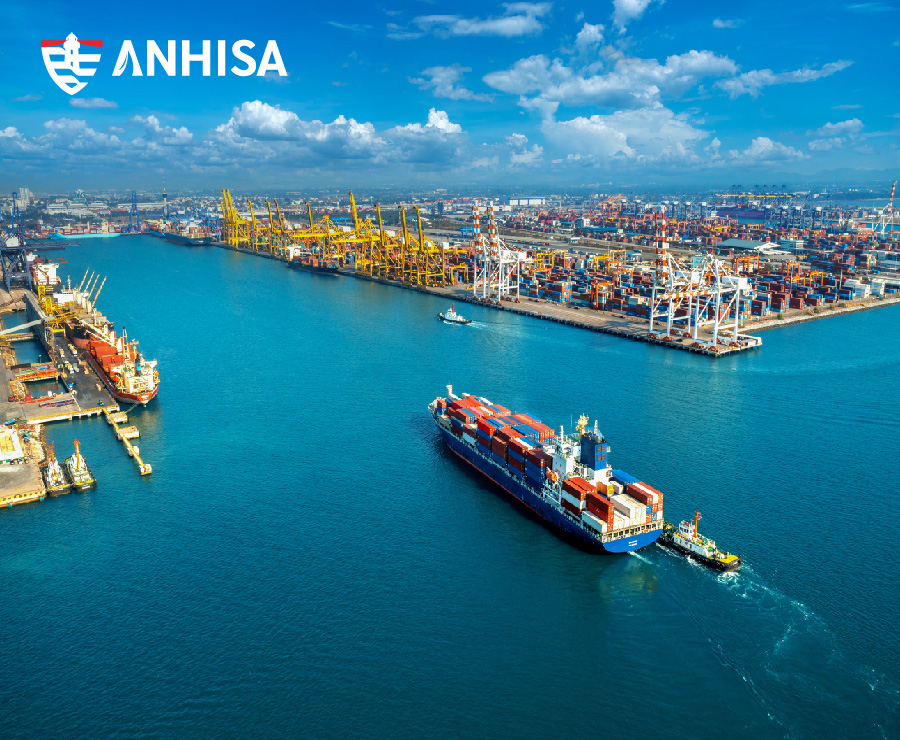
Understanding Laytime and Total Laytime
Laytime, a crucial aspect of charter parties for ship owners, refers to the time allowed for loading/unloading cargo. It determines the financial implications for both ship owners and other parties involved. Exceeding the laytime incurs demurrage charges, resulting in additional costs for ship owners.
Key points to understand about laytime and total laytime:
- Laytime : Laytime is the agreed-upon period during which the charterer has the right to load or unload cargo. It is typically expressed in days, hours, or even minutes. The clock starts ticking once the vessel arrives at the designated port or berth.
- Demurrage : When laytime is exceeded due to delays caused by either party, demurrage charges come into play. Demurrage refers to the money the charterer paid to compensate for the extra time taken beyond the agreed-upon laytime. This ensures that shipowners are compensated for any lost time and potential revenue.
- Financial Implications : Understanding laytime is essential because it directly impacts both parties’ financial interests. For shipowners, shorter laytimes result in quicker turnaround times and increased efficiency. On the other hand, charterers aim to maximize their use of laytime while avoiding demurrage costs.
By comprehending these concepts related to laytime and total laytime, ship owners and other parties involved in charter parties can effectively manage their operations while minimizing potential financial risks.
Remember: Promptly completing loading or unloading operations within the agreed-upon timeframe helps avoid unnecessary expenses and contributes to smoother logistics processes for all stakeholders involved in the ship charter, slot charter, voyage charter party, and charter party chain.
Safe Port Requirements in Voyage and Time Charters
Voyage charters require the charterer to transport cargo from one port to another by ship. In these agreements, it is crucial for the charterer to ensure that the chosen ports for cargo operations meet certain safety requirements. Similarly, time charters impose an obligation on the charterer to nominate safe ports throughout the duration of the agreement.
The selection of a safe port is crucial for ships due to the potential risks involved. Safety concerns encompass navigational hazards, ship security measures, and infrastructure conditions. By considering these factors, charter parties can mitigate dangers and ensure smooth ship operations.
Here are some key points regarding safe port requirements for ships in both voyage and time charters.
- Charterers must carefully evaluate the safety aspects of each port before initiating cargo operations on their ship.
- When entering a voyage charter party, it is essential to consider navigational hazards such as shallow waters, narrow channels, or unpredictable weather conditions that may be encountered during the ship’s journey.
- Security measures at ports are crucial in safeguarding cargo, whether on a ship or on land, from theft or any other criminal activities.
- The responsibility to nominate safe ship ports lies with the charterer throughout the duration of the contract.
- It is essential for charterers to stay updated on any changes in safety conditions at nominated ports to ensure their ships’ safety.
- Regular communication between all parties involved in the ship ensures that any safety concerns related to the ship are promptly addressed.
Key Takeaways on Charter Parties
Charter parties are critical legal instruments in the maritime industry. They establish rights, obligations, and liabilities between parties involved in international shipping. Here are some key aspects to consider:
- Lesson: Charter parties serve as a vital framework that ensures smooth operations within the maritime sector.
- Aspects: These agreements cover various aspects, including vessel specifications, cargo details, and the duration of the charter.
- News: Staying informed about recent developments and changes in charter party regulations is crucial for all parties involved.
- Details: The terms and conditions outlined in charter parties provide specific details regarding payment terms, insurance requirements, and dispute resolution mechanisms.
- Act: Charter parties act as binding contracts that protect the interests of both shipowners and charterers.
- Fortior: By clearly defining responsibilities and obligations, these agreements fortify relationships between shipowners, charterers, and other stakeholders.
Charter parties play an instrumental role in facilitating international trade by ensuring the efficient transportation of goods across borders. As these agreements govern vital aspects of maritime operations, it is essential for all parties to familiarize themselves with their provisions. Understanding the intricacies of charter parties can help mitigate potential disputes while fostering mutually beneficial relationships within the global shipping community.
Real-world Challenges with Charter Party Disputes
Legal professionals play a crucial role in resolving charter party disputes, which can be complex and challenging. These disputes often arise from breaches of the terms outlined in the charter party agreement. Arbitration is frequently employed as an alternative to court proceedings to settle such disagreements.
The involvement of legal professionals is essential due to the intricate nature of charter party disputes . Breaches of contract terms can lead to various issues, including financial costs, risks, and responsibilities for both parties involved. Here are some examples that highlight the complexities faced in this industry:
- Maintenance Responsibility: Disagreements may arise.
- Demise Charter Issues: A demise charter involves transferring full control and possession of a vessel to another party. However, conflicts may occur regarding the condition or performance of the vessel during this arrangement.
- Country-Specific Practices: Different countries have their own regulations and practices concerning charter parties, leading to potential clashes between international parties.
Arbitration is commonly utilized to settle these disputes outside of traditional court processes. This alternative dispute resolution practice offers several advantages:
- Confidentiality: Arbitration provides a more private setting compared to court hearings.
- Expertise: Parties involved can select arbitrators with specialized maritime law knowledge or specific aspects of their cases.
- Flexibility: The arbitration process allows for tailor-made procedures that suit the unique circumstances of each dispute.
At ANHISA, we have established ourselves as trusted lawyers and counsels for shipowners and charterers involved in charter party disputes. Our extensive experience in practical cases has allowed us to successfully advise and resolve complex situations, such as indemnification requests by shipowners due to early termination breaches.
We understand the importance of finding amicable solutions that benefit all parties involved. However, when negotiations fail, our team at ANHISA is well-equipped to guide shipowners through the arbitration process, ensuring their claims are properly represented.
Our expertise goes beyond shipping knowledge; we possess the technical know-how and strategic insights required to meet our clients’ expectations. With a strong foundation in shipping practice and a track record of working with international and local clients, we are committed to providing efficient, reliable, and personalized service for all your charter party disputes.
If you require assistance in resolving any charter party dispute, do not hesitate to reach out to us for a consultation. We are here to help.
Contact us via:
- Mr. Dang Viet Anh
- Email: [email protected]
- T: +84 28 5416 5873
- M: +84 983 467070
Q1: How can ANHISA assist with charter party disputes?
At ANHISA, we offer comprehensive legal counsel and guidance throughout the process of resolving charter party disputes. From negotiation strategies to arbitration representation, we ensure that our clients’ interests are protected.
Q2: What sets ANHISA apart from other law firms?
ANHISA’s unique advantage lies in our deep-rooted expertise in shipping practice combined with years of experience working with international and local clients. Our team possesses the technical knowledge and insights necessary to navigate complex charter party disputes effectively.
Q3: Can ANHISA help with both voyage and time charter disputes?
Yes, our expertise covers both voyage and time charter disputes. Regardless of the type of charter party involved, we have the knowledge and experience to provide tailored solutions for our clients.
Q4: How long does resolving a charter party dispute typically take?
The duration of resolving a charter party dispute can vary depending on the case’s complexity and the parties’ willingness to reach a settlement. At ANHISA, we strive to expedite the process while ensuring thorough representation for our clients.
Related posts

Mr. Đặng Việt Anh is one of the key speakers at Advanced Mediation Skills Training Course organized by the Vietnam Mediation Center (VMC)
April 10, 2024

Ship Arrest in Vietnam? ANHISA – Your Trusted Legal Services
April 02, 2024
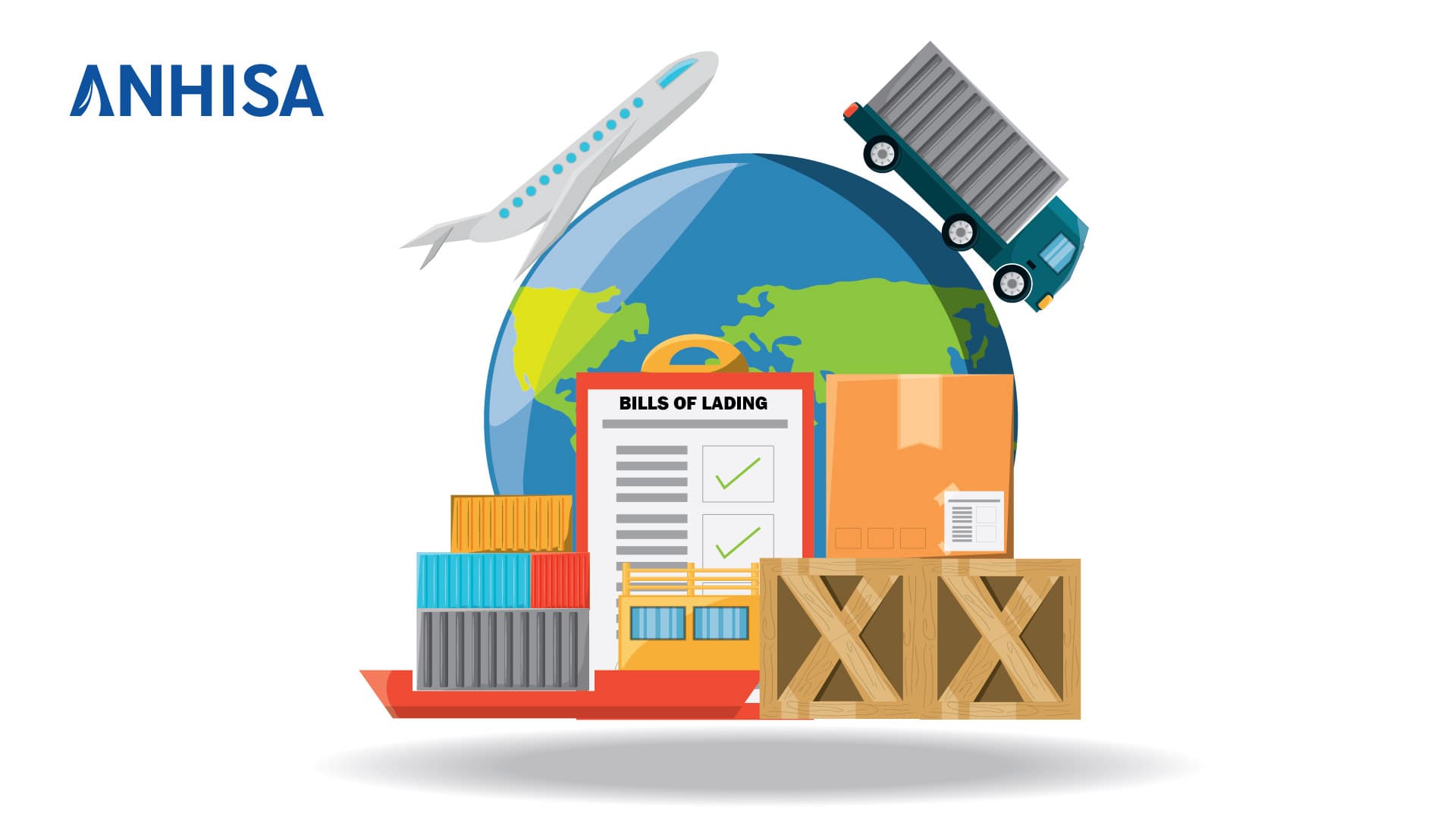
Bills of Lading: Importance for International Shipping
March 19, 2024
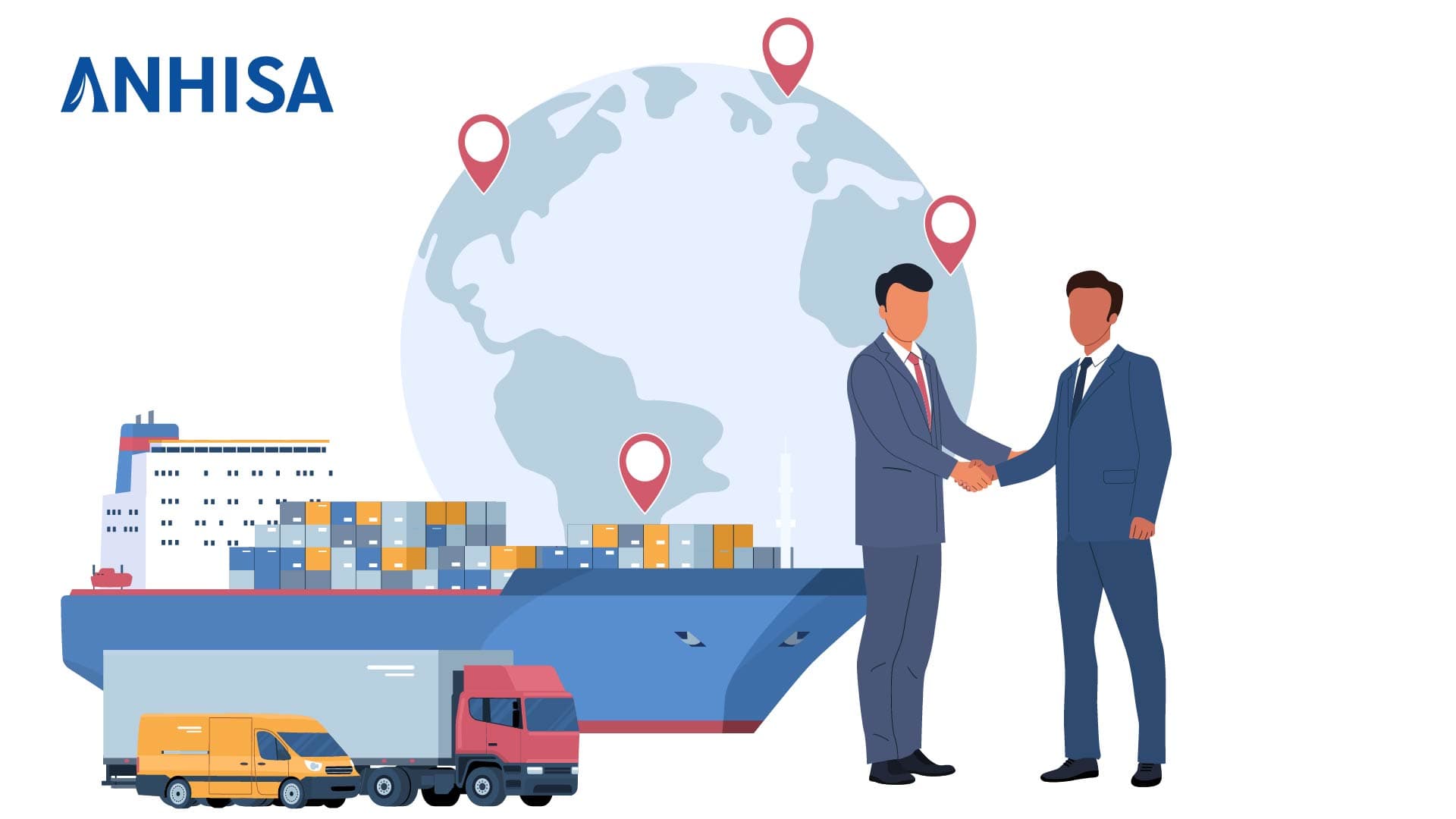
Mediators’ Role in Alternative Dispute Resolution (ADR)
March 13, 2024

What is Alternative Dispute Resolution (ADR) – ANHISA International Law Firm
March 03, 2024
- [email protected]
- [email protected]
- Hanoi Office: +84 24 320 47609
- Saigon Office: +84 28 5416 5873
- +84 (0) 939 117 398
- +84 (0) 983 488 380
© 2022 Anhisa LLC

Charter Party Agreements
Img is one of the only law firms in the pacific northwest that focuses on both the transactional side and the litigation side of charter party agreements..
Different charter parties impose different obligations, exclusions, and limitations between each entity. For this reason, both shipowners and charterers should consider seeking sound and practical legal advice before drafting, amending or complementing any time charter, voyage charter, or bareboat charter party. During a contentious charter party dispute, shipowners and charterers should be especially aware of their legal exposures and contractual liabilities.
With experience in bareboat, time and voyage charters, contracts of affreightment and slot charters, dry bulk and containerized cargoes, oil, gas and products, IMG regularly acts on behalf of the region’s largest shipowners and charterers. Indeed, our expertise in transactional and contentious charter party matters gives us an invaluable perspective – we can foresee the problems that might arise and take steps to avoid them. Need help understanding your legal rights in a charter party contract? IMG can help.
or call (206) 707-8338 to speak to a legal expert.

Bareboat Charters – What you need to know
Strapped for capital but want to expand your fishing fleet? Bareboat charters can be a great financial alternative, provided you understand your liability.
Frequent Charters We Advise Upon

Time Charters
Time chartering is a complex business. The shipowners give the time charterers substantial control over the commercial operation of the vessel in exchange for the regular payment of hire. While this arrangement suggests that the shipowners have transferred much of the potential operational risk to the charterers and that the charterers can do more or less what they like with the ship, such an initial impression on behalf of the time charterer is both deceptive and dangerous.
If you would like clarification of your rights and liabilities as either a time charterer or a shipowner, IMG can help.

Voyage Charters
Voyage charters are the most commonly used charter party agreement. Under a voyage charter, a ship owner and a charterer enter into a contract whereby the vessel will carry cargo between two points. The voyage can be a single trip or multiple trips, provided that the charterer has absolutely no operational control over the vessel while it is being operated. Any delays during the loading and unloading of the cargo, as well as any delays during the seagoing part of a voyage, generally fall onto the vessel owner. Many charterers prefer this allocation of risk.

Bareboat Charters
A bareboat charter is the simplest type of charter party agreement. Under a bareboat charter (a.k.a. “demise charter”), the charterer effectively becomes the owner of the vessel for all operational and trading purposes, and thus, is responsible for the navigation, operation, repair, maintenance, insurance, and crew of the vessel.
Despite an appearance of simplicity, bareboat charters are complex agreements, and numerous problems can arise during their use. Owners and charterers should seek sound legal advice before drafting or amending a bareboat charter.
What to Expect From Your Legal Team
- We provide practical, commercial and results-driven advice on a discreet and confidential basis.
- All assignments will have a nominated lead partner who will be your dedicated point of contact.
- We will work to your agenda, timescales and budgets to achieve the best outcome.
- We would expect to be your trusted adviser during the process and our industry knowledge and reputation will facilitate a direct and open dialogue between all stakeholders.


Ship Chartering Process – The Ultimate guide
When a ship is taken on rent, it is known as ship chartering. Just as people take an apartment or a car for rent, some people may rent a ship based on their requirements. It could be to transport passengers or cargo.
Renting a ship is known as ship chartering and it begins with the shipowner and a second party entering into an agreement. In shipping parlance, this agreement is known as a charter party.
The party that rents out the ship is the shipowner and the second party who is taking the ship on rent is known as the charterer.
Who brings these two parties together?
Shipbrokers play an important role in bringing the right shipowner and charterer together and in finalizing the terms of the agreement between them.
Typically, someone who wants to take a ship on a lease would approach a shipbroker to find the right vessel that suits their purpose.
As we can see here, there are three parties in the process of ship chartering:
– the shipowner who owns the vessel being rented,
– the charterer who requires the ship on rent, and
– the shipbroker who has helped to bring them together.
Let us take a quick look at the roles of each of these parties.
Table of Contents
A shipowner may be an individual or an organization who owns merchant ships that are registered under their name with a ship registry. Merchant ships carry cargo or passengers for a charge.
Shipowners are usually members of the regional chamber of shipping or the International Chamber of Shipping (ICS). This global body is responsible for all regulatory and operational issues to do with shipping. Legal issues that crop up in the shipping business are also handled by the ICS.
Someone who wants to rent a ship, either to transport cargo or passengers, is called a charterer. The cargo may or may not belong to the charterer. The charterer may be transporting it on behalf of a different party.
Sometimes a charterer may take a vessel on lease and re-rent it to another party for the transport of cargo or passengers, for a profit.
The charterer plans the ship’s voyage and the arrangements for the handling of cargo during loading and unloading. As such, he is responsible for the safety of the ship, its crew, and the cargo.
The charter party is signed between the shipowner and the charterer.
Like all other brokers, shipbrokers also help to identify the right customer for a shipowner who wants to rent his ship or vice versa. For their services, they charge a fee or a commission to the shipowner. The commission may be a percentage of the total freight paid to the shipowner by the charterer.
Sometimes, a shipowner might appoint a full-time shipbroker for getting business. In the ship chartering business, it is common to find brokers who specialize in the chartering of certain types of vessels. It could be for the transportation of goods such as dry bulk, liquid bulk, etc.
A shipbroker is not liable for the ship, its operations, or the cargo that it carries. He is just the intermediary between the shipowner and the charterer.

The Institute of Chartered Shipbrokers
The Institute of Chartered Shipbrokers (ICS) founded in 1911 is a professional body that is recognized worldwide among the shipping fraternity. It was brought under the British Royal Charter in 1920.
Based in London, the Institute of Chartered Shipbrokers is considered the representative body of the many shipbrokers and ship managers on a global level. Through its various courses, it certifies qualified and experienced individuals to become professional shipbrokers.
Ship Registry
The authority or body that registers a merchant ship is known as a ship registry. It may be a government ship registry or a registry owned by private organizations such as the Lloyds Registry, Bureau Veritas, Indian Register of Shipping (IRS), etc.
Every ship has to be registered whereby it gets its nationality and confirmation of ownership. Each registered ship comes under the jurisdiction of the law of the country where it is registered, known as the flag state. Some countries or organizations may register only the ships of that particular country. Such organizations are known as National Registries.
Organizations that are open to register both national, as well as ships of other countries, are called Open Registries.

The 3 Main Types of Ship Charters
Voyage charter.
This is the most common type of ship charter. A voyage charter normally involves renting the vessel as well as its crew for a particular voyage between two or more ports. The rent will be based on the quantity or weight of the cargo that is carried on the voyage or it could be a fixed amount that is agreed upon between the parties.
Time Charter
When a ship is hired for a certain period, it is known as a time charter. As in the other types of charters, the vessel is rented along with the crew but for a stipulated period. The charter party will clearly state the terms and conditions of the voyage, the agreed period of hiring, the type of cargo to be carried, etc.
In a time charter, the charterer may pay a daily or a monthly rate based on the deadweight ton.
Bareboat Charter
In the bareboat charter, the vessel is operated and managed by the charterer’s crew and vessel management staff. The shipowner will only be looking after the ship’s technical management and matters relating to port operations.
Responsibility for the safety of the ship and all the financial settlements with outside parties will be with the charterer for the duration of the charter party. A bareboat charter is also known as a demise charter.
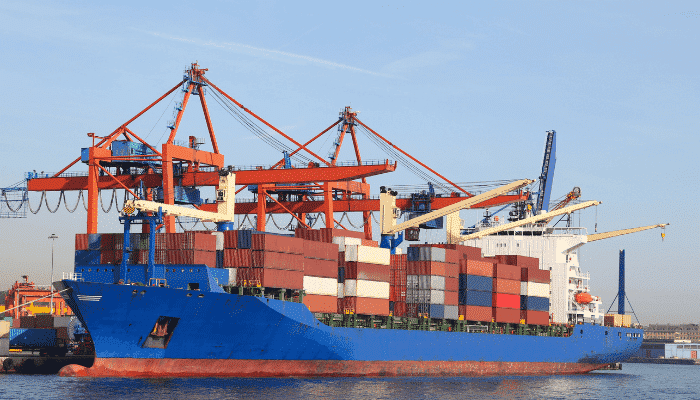
Charterparty
The charter party is a contract between the shipowner and the charterer. It states the responsibilities of both these parties with regard to the ship charter.
The charter party must be detailed and cover all aspects of the charter, especially points like re-renting of the vessel by the charterer, the type of cargo to be loaded on the ship, and ports of call .
In ship chartering, all the parties involved should be aware of the various details that go into the making of a successful charter party or fixture.
The shipowner, as well as the charterer, must be aware of the background of the other, their financial standing, and business reputation.
Just as the shipowner must know the type of cargo that is to be carried on the ship and its date of sailing etc. the charterer should be aware of the cargo-handling capacity of the vessel and its flag.
It would do the shipbroker good if he knew all these details before approaching a prospective client.
You might also like to read:
- Who is a Shipping Agent?
- Who is a Container Surveyor?
- Who is a Marine Surveyor – Responsibilities, Qualifications, and Skills
- Who is a Harbour Master (Port Master)?
- NOTIFY PARTY in Shipping – Everything You Wanted To Know
Do you have info to share with us ? Suggest a correction

About Author
Hari Menon is a Freelance writer with close to 20 years of professional experience in Logistics, Warehousing, Supply chain, and Contracts administration. An avid fitness freak, and bibliophile, he loves travelling too.
Latest Maritime law Articles You Would Like :

Why Dry Ice Is Used For Packaging

What is the Purpose of DG Shipping?

What are Logistics Risks?

How Port and Terminal Operators Can Control Emissions?

Minimum Quantity Commitment (MQC) and Liquidated Damages in Container Shipping: Concept and Relevance

MARPOL (The International Convention for Prevention of Marine Pollution For Ships): The Ultimate Guide

Latest News

Subscribe To Our Newsletters
By subscribing, you agree to our Privacy Policy and may receive occasional deal communications; you can unsubscribe anytime.
Leave a Reply
Your email address will not be published. Required fields are marked *
Subscribe to Marine Insight Daily Newsletter
" * " indicates required fields
Marine Engineering
Marine Engine Air Compressor Marine Boiler Oily Water Separator Marine Electrical Ship Generator Ship Stabilizer
Nautical Science
Mooring Bridge Watchkeeping Ship Manoeuvring Nautical Charts Anchoring Nautical Equipment Shipboard Guidelines
Explore
Free Maritime eBooks Premium Maritime eBooks Marine Safety Financial Planning Marine Careers Maritime Law Ship Dry Dock
Shipping News Maritime Reports Videos Maritime Piracy Offshore Safety Of Life At Sea (SOLAS) MARPOL
WAIT! Did You Download 13 FREE Maritime eBooks?
Sign-up and download instantly!
We respect your privacy and take protecting it very seriously. No spam!
WAIT! Did You Download 12 FREE Maritime eBooks?
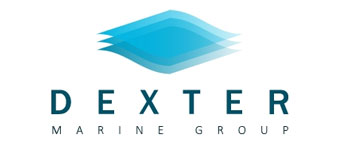
Voyage Charter vs Time Charter – Everything You Need to Know
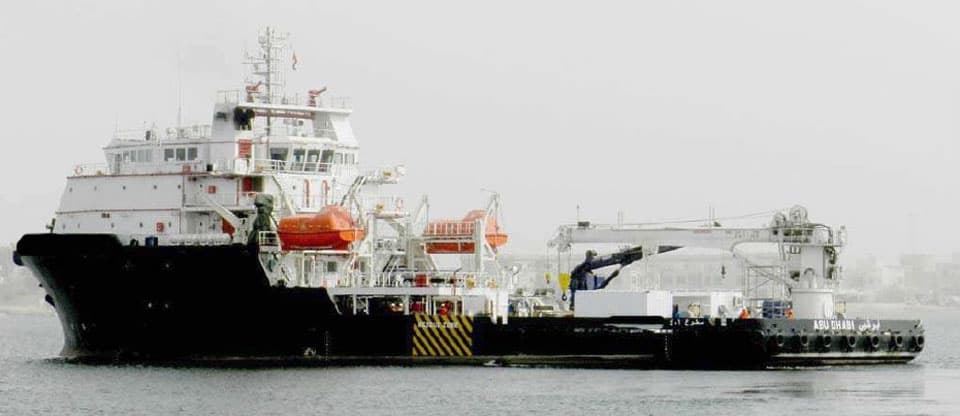
Voyage Charter vs Time Charter – Everything you need to know.
One of the biggest questions facing a charterer is whether to opt for a voyage charter or a time charter. Evaluating voyage charter vs time charter can be a complex process, but we’ve broken everything down on this page, making it easier for charterers to decide which type of vessel chartering is best for them.
1. What is a Charter? 2. What is a Voyage Charter? 3. Voyage Charter Features/Terms 4. Voyage Charter Pros & Cons 5. What is a Time Charter? 6. Time Charter Features/Terms 7. Time Charter Pros & Cons 8. How to Choose a Charter Type 9. Charter Cost 10. Ongoing Cost 11. Flexibility 12. Contract Length 13. Convenience 14. FAQs About Voyage Charter and Time Charter 15. Conclusion
What is a Charter?
A voyage charter and a time charter are two options commonly found in the chartering business. A voyage charter is when the charterer leases a vessel for a specific voyage, such as Dubai to Singapore, while a time charter is a type of lease that allows the charterer use of the vessel for a specific period of time.
As you might imagine, there are many differences between these two types of charters, and both vessel chartering options have their own pros and cons. Keep on reading this page about voyage charter vs time charter to find out which of the two options will be most suitable for your ship chartering requirements.
Voyage Charter
What is a voyage charter.
A voyage charter is a type of ship chartering that sees the charterer agree to lease the vessel for one specific voyage. So, for example, the agreement might be for the charterer to gain use of the charter ship for a journey from Dubai to Dover.
Features/Terms
As just mentioned, a voyage charter is when a charterer leases a vessel for one voyage. Before the charter contract is signed, the parties will agree on the end destination, any ports of call, and whether there will be any restrictions on cargo. Once signed, the charterer must not deviate from any of these agreements.
The terms and conditions of the charter agreement will also stipulate the laytime permitted. The laytime refers to the amount of time it takes for the vessel to be loaded and unloaded. As the ship owner pays for all costs at the port, they need this process to be as quick as possible. If the charterer exceeds the agreed time, they must pay demurrage to the ship owner. Conversely, the ship owner will usually refund some money if the loading and unloading is quicker than stipulated.
But who is responsible for what costs? Well, with a voyage charter, nearly all costs are covered by the ship owner. These include costs relating to staffing, berthing, loading, unloading, and fuel. They cover these costs by charging the charterer a fee for leasing the vessel.
The amount of money paid by the charterer can be determined in two ways. The most common way to pay is on a per-ton basis. As the name implies, this sees the charterer paying a set price for every ton of cargo they transport. This is preferred by charterers when the amount of cargo they’re transporting is significantly less than the vessel’s gross maximum cargo tonnage.
The other payment type is a lump sum – one payment that allows the charterer to transport as much cargo as they want to. It is the ship owner’s responsibility to ensure the cargo weight does not exceed the gross maximum tonnage of the vessel. This type of payment is preferred by charterers when they’re carrying a higher weight of cargo.
This type of vessel chartering is generally preferred by charterers. This is because it often has more competitive prices, plus they are not tied down to any long-term commitments.
Pros & Cons
Pro: Charterer not liable for any costs, except initial charter fee Pro: Incentives to complete port operations quickly Pro: No need to find a crew Pro: No long-term contract
Con: Lack of flexibility for charterer Con: Higher initial charter fee
Time Charter
What is a time charter.
A time charter is a type of vessel chartering that sees the charterer lease the ship for a set period of time. So, they might lease the ship for two months, during which time they have the flexibility to choose their own routes and destinations.
Before anything is signed, the ship owner and the charterer will agree the exact period of time the lease will run for. Unlike with voyage charters, the two parties will not need to agree on ports of call and destinations, as the charterer has complete discretion over this.
With a time charter, the ship owner does not cover all costs. Instead, the charterer must pay for fuel and supply costs, as well as the cost of cargo operations. However, the charterer won’t have to pay such a large charter fee, which balances things out somewhat. The owner is still required to pay for the crew and ongoing maintenance, and also must ensure the vessel meets all necessary maritime safety standards.
It is generally the case that the charterer will pay for hire in advance, on a per-day basis. Payment is not usually made in one lump sum, with the charterer instead paying the lease charge in set instalments, which are usually quarterly. It’s important to note that, should the ship be held up in unforeseen circumstances, such as inclement weather, the lost time – referred to as off-hire hours – will not usually be charged for, although if too many off-hire hours are accrued, the charterer might end up being liable.
Ship owners generally prefer their vessels to be leased on a time charter. This is because time charters guarantee income for a long period of time, giving the ship owner increased security.
Pro: Guarantees charterer access to a vessel Pro: Initial lease cost is lower Pro: More flexibility for the charterer
Con: Several ongoing costs to pay Con: Tied down to long-term contract
How to Choose a Charter Type
We’ve discussed voyage charter vs time charter above, looking at the various pros and cons of each. But which should you choose when looking to charter a ship?
Well, this really depends on your requirements. We’ve broken things down into five sections – charter cost, ongoing costs, flexibility, contract length, and convenience – and will let you know which of the ship chartering options is better for each one.
Charter Cost
When it comes to the initial cost of chartering a ship, it’s nearly always going to be cheaper to go with a time charter. This is because the ship owner will be more amenable to a lower price, as they know you’ll be hiring the vessel for longer. What’s more, you, and not the ship owner, will be expected to cover other costs, pushing the initial price down further.
So, if you’re looking for the lowest possible upfront cost, the best option is a time charter. However, remember that other costs will also need to be paid.
Ongoing cost
If you choose to take out a time charter, you will have to pay several costs, including fuel and supply costs. With voyage charters, the only significant cost payable is the initial charter – all other major expenses are covered by the ship owner.
Therefore, if you want the lowest possible ongoing costs, the clear winner is the voyage charter. However, the upfront cost will be more expensive than a time charter.
Flexibility
Those who sign up for a voyage charter are limited in their movements, as they will have already agreed a set route with the ship owners. Those who have taken a time charter have far more freedom, as they can choose where to go throughout their charter.
This clearly means that those looking for more flexibility should opt for a time charter, as there are no limitations on route, ports of call, and destinations.
Contract Length
With a time charter, you’re tied into a long contract, committing you to ongoing payments. Voyage charters, on the other hand, only last for the duration of the voyage, meaning voyage charters are generally much shorter than time charters.
This all means that those looking for the shortest contract should opt for a voyage charter. However, if you know you’ll constantly need an available vessel, the long contract of a time charter could be more suitable.
Convenience
There will be no need to hire and pay a crew when opting for either the time charter or the voyage charter. It’s only bareboat charters that require the charterer to hire and pay their own crew. However, the ongoing costs associated with time charters can be inconvenient.
Overall, voyage charters are the more convenient of the two options, as there’s no need to organise payment for such things as port costs and fuel. However, both options are generally far more convenient than a bareboat charter.
FAQs About Voyage Charter and Time Charter
What are BIMCO Sanctions Clause for Voyage Charter Parties 2020?
These are intended to help in two scenarios. Firstly, if one of the signatories of the agreement gets sanctioned, the other signatories will be able to end the contract and claim damages. Secondly, when the trade or activity is subject to or becomes subject to sanctions, the ship owners can refuse to perform their contracted duties.
What is the difference between bill of lading and charter party vs time and voyage charter?
A charter party is an agreement between charterer and ship owner to lease a ship. A bill of lading is an agreement that legally obligates the charterer to carry cargo that has been loaded aboard the ship.
A time charter is a type of vessel chartering whereby the ship owner leases the ship for a set length of time. A voyage charter is a type of vessel chartering whereby the ship owner leases the ship for the duration of a specific voyage.
What are the duties and responsibilities of the ship owner and charterer under a time charter and voyage charter party?
Under a voyage charter, the ship owner assumes almost all responsibility, including hiring and paying crew, and paying for all significant costs associated with the journey. The charterer simply has to pay the ship owner a fee to secure their vessel.
With time charters, ship owners must still hire and pay staff. However, most other significant costs associated with a voyage, such as fuel and port fees, must be paid by the charterer.
Why do ship owners prefer voyage charter over time charter?
Quite simply, they don’t. Ship owners usually prefer time charters, as they ensure that their ship is guaranteed to be chartered for a longer period, generating income throughout.
Voyage charters are short, meaning the ship owner must continually find new charterers to lease the vessel to – something that isn’t always possible. When a new charterer can’t be found, the ship owner loses money.
Please note that charterers are required to take out insurance for both types of charter, to cover them against damage, injury, marine salvage , and more.
Those looking for short-term charters are best served by opting for a voyage charter, as these don’t require a long contract to be signed. They do have a higher initial cost, but this is offset by the fact that no other significant fees need to be paid.
However, those who know they’ll regularly require the use of a vessel might be better off with a time charter, as these see vessels leased for a long period of time. During this time, the vessel can be used to travel anywhere, without restriction. Time charters cost less upfront, but require the charterer to pay various other costs, such as the cost of fuel and port fees.
Have you found this page to be helpful? If so, please share it on social media! Also, feel free to leave a comment below!

DEXTER OFFSHORE LTD
Mazaya Business Avenue – BB2- 1403 – First Al Khail St – Dubai, United Arab Emirates Tel: +971 04 430 8455
MORE INFORMATION
Contact Us About Us Meet Our Team QHSE Policy
CONNECT WITH US
LinkedIn Facebook Instagram YouTube

The ins and outs of ship chartering
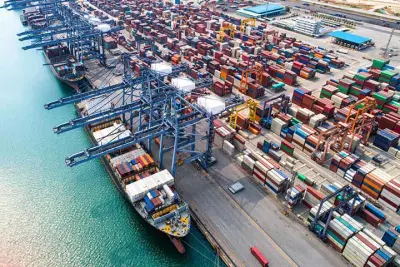
Ship chartering is the hiring out the use of a ship by a vessel owner to another company, the charterer, for the transportation of goods. It may sound straightforward enough, but in practicality, it’s anything but simple. There are many different types of charter contracts, various cost components, and of course many different players involved. In this article, we’ll breakdown the ins and outs of chartering, covering how it works, who’s involved and how costs are divided.
- The main players
The two main players in ship chartering are the ship owner and the charterer. There are others as well, the most important being the ship broker. There is also the shipping agent who takes care of the essential in-port details and the ship manager, who takes care of operating and crewing the vessel on behalf of the owner for a fee.
It should be noted that the term charter party refers to the contract itself, and not to the parties entering into the contract. The charter party defines the rate, duration, and terms agreed between the ship owner and the charterer.
The ship owner provides the means for transporting cargo from one port to another. The Charterer enters into a contract with the owner to hire the ship, or space in the ship, for transporting his cargo. In some cases a charterer may own the cargo and employ a ship broker to find a suitable vessel to deliver the cargo for a certain price, called the freight rate.
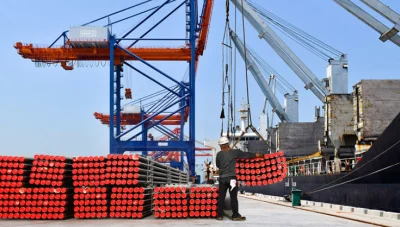
The charterer may also not have his own cargo, but instead charters a vessel for a certain period of time and trades the ship to carry cargoes at a profit. He can also sub-hire the ship to other charterers in positive market conditions.
The ship broker is essentially a middleman who connects the principals in order to earn a brokerage fee. He can represent either the owner or the charterer in negotiations, and usually specialises in specific areas of cargo carrying. For example, a dry cargo broker focuses on the chartering of bulk carrier vessels. He can represent either an owner looking for a charterer, or a charterer seeking a suitable vessel for shipping his cargo.
Similarly, and as the name suggests, a tanker broker specialises in chartering tanker vessels and has a good understanding of the specific needs for transporting crude oil, gas, oil products, or chemicals.
Shipping Agents are designated to take responsibility for handling shipments and cargoes at the ports on behalf of the owners, fleet managers, and charterers. They handle the essential routine tasks, such as crew transfers, customs documentation, waste declarations and so on, working closely with port authorities. They can also provide detailed information on activities at the destination port, so that the shippers can be aware of situations while the goods are in transit.
- Types of charters
The three most common types of charter contracts are the voyage charter, the time charter, and the demise (or bareboat) charter.
Voyage Charter
The basic hiring of a vessel and its crew for a voyage between the port of loading and the port of discharge is known as a voyage charter. In this type of contract, the ship owner is paid by the charterer either on a per-ton basis, or as a lump sum. Port costs, with the exception of stevedoring, fuel costs, and the crew costs are paid by the owner, and payment for the use of the vessel is known as freight.
Under the terms of a voyage charter, a specific time is agreed for the loading and unloading of the cargo. This is known as laytime, which, if exceeded, obliges the charterer to pay demurrage. Conversely, if laytime is saved, the owner may have to pay despatch to the charterer.
There is also a consecutive voyages clause. This is used when one voyage follows another immediately for an agreed number of voyages within a specific timeframe. The ship is thus going back and forth with an agreed cargo between agreed ports.
Time Charter
A time charter refers to the hiring of a vessel for a specific period of time. Here, the owner still manages the ship, but the charterer selects the ports, decides the routing, and has full operational control of the vessel for the duration of the contract. He pays the fuel costs, port charges, cargo handling costs, commissions, and a daily hire fee.
There is also a trip time charter covering a specific voyage route only for the transportation of a specific cargo. It can be said to be a combination of a voyage charter and a time charter. The responsibilities are similar to those with a time charter (the fixed costs being paid by the owner and the variable costs by the charterer), but as with a voyage charter, the period of the contract depends upon when the voyage is completed.
The Demise Charter
Under the terms of a demise charter, also known as a bareboat charter, the charterer has full control of the vessel. Apart from the capital cost of building the vessel, which is the owner’s responsibility, all other costs including fuel, crew, port charges and insurance, are paid by the charterer. The legal and financial responsibility for the vessel rests with the charterer.
Under the demise clause, the contract can be for long period charters lasting for many years. This is fairly common for tankers and bulk carriers. It can be a form of hire-purchase whereby the charterer eventually acquires ownership of the vessel.
In the leisure industry, the term used is Bareboat Yacht Charter and the Demise Charter term is not used. It is normally a short-term charter for a matter of weeks only. Here, the owner supplies the yacht fully fuelled and in seaworthy readiness. The charterer is expected to pay for the fuel consumed.
Contract of Affreightment
Finally, there is what is known as a contract of affreightment. This is not strictly a charter contract, but is somewhat similar to a voyage charter. Under this type of contract, the owner agrees to transport the goods for the charterer on a specified route and for a specific period of time. More than one ship can be used and, in contrast to a true charter, there is no laytime period and no demurrage is payable.
- Who pays what?

There are various cost components applicable to all charter contracts. These can be summarized as follows:
In all cases, the owner is responsible for the capital cost of building and equipping the ship. The operating costs (OPEX), i.e. operating and maintaining the ship and complying with all applicable rules and requirements, are also paid by the owner in voyage and time charters. In demise charters, however, the operating costs are paid by the charterer.
Periodic costs are those that are incurred at certain intervals of time. These include, for example, periodic technical inspections and surveys for class classification purposes. Here again, the owner is responsible with time and voyage charters, but not for demise charters. In demise charters, it is the charterer who pays such periodic costs.
Voyage costs cover the fuel, any right of passage dues, such as canal dues, towage and piloting costs, as well as port agency costs. With time and demise charters, the voyage costs are paid by the charterer. Only in voyage charters are these costs paid by the owner.
The same is true of cargo handling costs – the cost of loading and discharging the cargo. With time and demise charters this is the responsibility of the charterer, while the owner pays these costs only with voyage charters.
Sign up for our newsletter for latest news, insights and innovations

Vessel Chartering: A Comprehensive Guide to the Benefits and How to Charter a Vessel
Vessel chartering is the process of hiring a vessel for the transportation of goods. It is a vital part of the global shipping industry, as it allows for the efficient and cost-effective movement of commodities around the world.
Types of vessel charters
There are three main types of vessel charters:
- Voyage charter: A voyage charter is a contract for the carriage of a specific cargo from one port to another. The charterer pays the shipowner a freight rate per ton of cargo or a lump-sum amount for the entire voyage.
- Time charter: A time charter is a contract for the hire of a vessel for a specific period of time. The charterer pays the shipowner a daily hire rate and is responsible for the operating expenses of the vessel, such as fuel, crew wages, and maintenance.
- Demise charter: A demise charter is a contract that is similar to a time charter, but with the key difference that the charterer takes on full operational control of the vessel. This includes responsibility for the vessel’s crew, maintenance, and insurance.
Vessel chartering is a complex process that involves a number of different factors, such as the type of cargo being shipped, the size and type of vessel, the distance traveled, and the current market conditions.
Key benefits
Here are some of the key benefits of vessel chartering:
- Flexibility: Vessel chartering offers a high degree of flexibility for both shipowners and charterers. Shipowners can lock in freight rates for a specific period of time, while charterers can secure capacity for their shipments without having to invest in their own vessels.
- Cost-effectiveness: Vessel chartering can be a cost-effective way to transport goods, especially for large shipments. Charterers can often negotiate favorable rates with shipowners, and they can avoid the fixed costs associated with owning and operating their own vessels.
- Reliability: Vessel chartering is a reliable way to transport goods, as shipowners are contractually obligated to provide the agreed-upon service. This can be particularly important for charterers who need to meet strict delivery deadlines. (Discover the benefits of chartering a bulk carrier and its impact on international trade: “ Bulk Carrier Transport: The Backbone of Global Trade “)
Important notes
If you are considering chartering a vessel, there are a few things you should keep in mind:
- Choose the right type of charter: The type of charter you choose will depend on your specific needs. If you need to ship a specific cargo from one port to another, a voyage charter is likely the best option. If you need to hire a vessel for a longer period of time, a time charter or demise charter may be a better choice.
- Negotiate the right terms: It is important to carefully negotiate the terms of your charter contract. This includes the freight rate, loading and discharge ports, and the duration of the charter. You should also make sure that the contract includes provisions for dispute resolution and force majeure events.
- Work with a reputable broker: A reputable ship broker can help you to negotiate favorable terms and conditions for your charter contract. They can also help you to find a suitable vessel and to manage the chartering process.
Related Posts

VLCC Vessels Market Trends

AvexNav Prime Services
Leave a comment cancel reply.
Your email address will not be published. Required fields are marked *
Save my name, email, and website in this browser for the next time I comment.
AVEX NAV provides professional services on ship management, buying and selling of vessels and other specialized sea transport.
Quick Links
- Our Services
- Privacy Policy
Ship Categories
- CPP Tanker Ships
- DPP Tanker Ships
- Platinum Tower (Cluster I) Jumeirah Lakes Towers JLT office no 1401 P.O BOX 121746, Dubai, U.A.E
- +971501560074
- +971504609615
- [email protected]
- © 2023 Avexnav, All Rights Reserved.

What Is Ship Chartering? Charter Types Explained!
The need for organizations to transport goods by sea in a cost-effective manner constitutes the backbone of Global trade. Organizations achieve this objective by either using their own ships or leasing them from others in cases where their own assets do not meet their requirements.
Chartering of a vessel is a maritime term that is used to describe the form of business hiring or renting out a vessel and crew to transport goods or passengers for a fee.
Ship chartering is a popular way for companies to transport goods and materials around the world. It is also used by the military and government for the transport of personnel and equipment.
Ship chartering is a complex process, as there are a number of factors that must be taken into account before a charter is finalized. In this article, we’ll explain the different types of chartering, how ships are chartered, and the different parties involved in chartering.
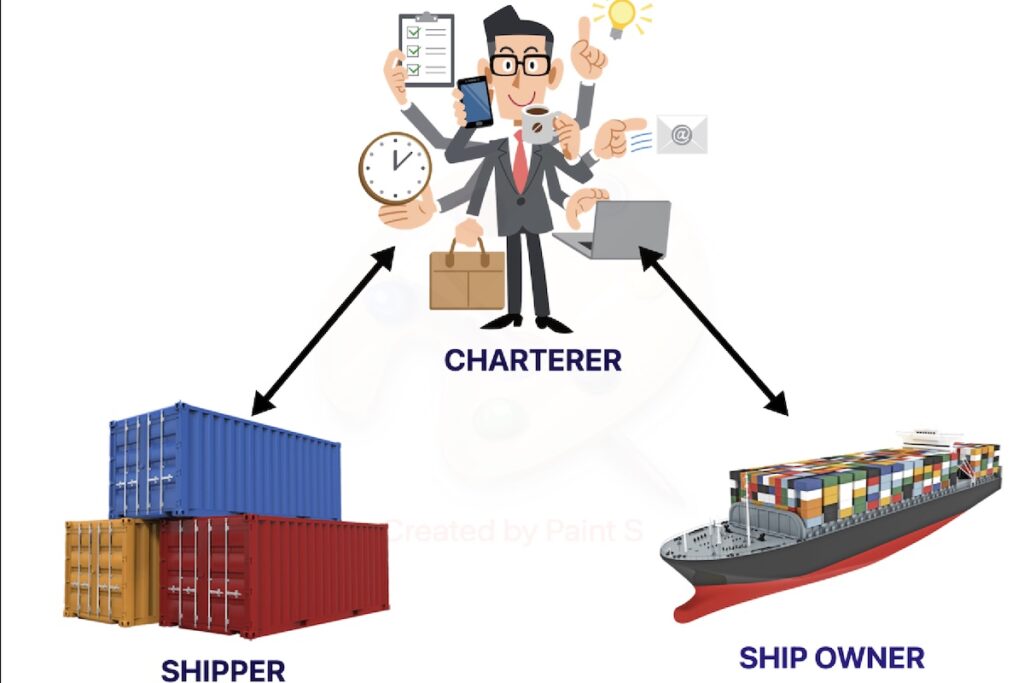
What is Ship Chartering?
Let’s take a closer look at what is ship chartering. Ship chartering is the process of entering into an agreement where a shipowner agrees to rent out their vessel to a cargo owner to carry freight from one port to another.
The two parties involved in this process are the shipowner, who is the legal entity registered as the owner of the vessel, and the charterer, which is a company that has hired out the ship for transporting their goods. A charter contract outlines all of the conditions, obligations, and details related to how these agreements are established.
Sometimes a charterer may also be a party that does not have cargo but takes a vessel on hire for a predetermined period from a shipowner. This party then trades the ship to carry cargo at a profit that is greater than the hire rate or even makes a profit in a rising market by re-letting the ship out to other charterers.
Sometimes operators employ a ship and then re-employ the vessel for further business chartering. In such a new role they are described as disponent owners or time charter owners. A disponent owner is a party deemed to be the shipowner having control of the vessel by time charter
Chartering activity relies heavily on the services of brokers who may either be hired to locate a ship that will deliver the cargo for a specified fee known as the freight rate – ship brokerage, or brokers who locate cargo for ships- cargo brokerage.
Rates for transporting freight can be calculated based on the number of tons transported along a particular route, or they can be stated as a total amount – typically denominated in United States dollars – each day for the period of the charter that has been agreed upon.

What Are the Different Types of Ship chartering
The process of ship chartering is an important one in the world of maritime transportation . In order to understand ship chartering, it is first important to understand the different types of ship charters that exist.
There are three main types of ship charters: Bareboat, Time, and Voyage. Each type of charter has its own unique benefits and drawbacks that should be considered before entering into an agreement.
The various costs associated with chartering which are as follows are shared amongst the shipowner and charterer according to the type of charter. Ship operating costs. are costs that do not vary with ship use but are essentially incurred in the running of the vessel. They include crew costs, stores, maintenance & repairs, insurance, and administration
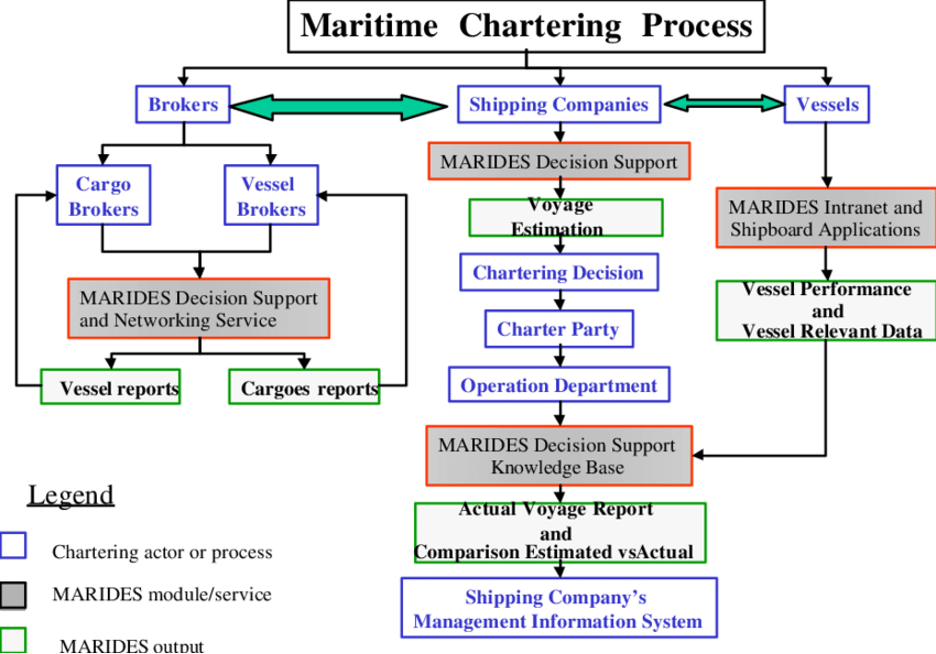
Voyage Costs on the other hand are expenses associated with moving the vessel from one port to another. They include port charges, light dues, stevedoring charges , cleaning holds, cargo claims, bunker fuel , and canal fees .
Voyage Charters
Voyage chartering is a contract in which the shipowner agrees to carry a specific cargo on their vessel for a single trip from one or more loading ports to one or more discharge ports. The payment for this service is called freight, and the contract is called a voyage charter party.
Voyage charters are typically between the shipowner or despondent owner and the charterer. The person who charters the ship is known as the voyage charterer, while the person who charters out their ship is known as the shipowner or deponent owner. This form of contract is often selected when the charterer has no experience in operating a ship, or when they only need to transport one consignment of cargo from one place to another.
Under a voyage charter, the master is appointed by the owner, revenue depends on the quantity of cargo and rate, and the shipowner is responsible for both operating and voyage costs. There are different forms of voyage chartering which are: single voyage chartering return voyage chartering, consecutive single-voyage chartering, and consecutive return voyage chartering
A voyage charter indicates a specific vessel, specific cargo, specific port, and specific route. The rights, duties, and responsibilities of ship owners and charterers are determined by the charter party, and the payment by the charterer to the shipowner for the chartered vessel is usually called freight instead of hire. The ship-owner can charter out the whole vessel or part of her space to the charterer. There are provisions made for laytime, demurrage, and dispatch
Time Charters
A time charter is when a ship owner offers a designated manned ship to a charterer to use for a set time period in exchange for a hire fee rather than for a set number of voyages or excursions. The entire or a portion of the ship is hired, and the hire is computed and paid based on the period of the charter and the agreed-upon hiring rate. The delivery and redelivery of the vessel are covered by stipulations.
Loading and unloading fees are often excluded from time charter rates. The duration of the charter could be for a single trip, many months, or even a few years. The time charterer could be a cargo owner who always requires transportation or a shipowner who needs to temporarily expand his fleet but does not want to invest in a ship but wants to be in charge of its commercial operation. A speculator taking a position in anticipation of a shift in the market may be the charterer.
The charterer is responsible for all expenses directly related to using the vessel, such as port fees and bunker costs, and they also cover loading and unloading. In a time charter, the shipowner, who is also in charge of the maintenance and navigational operation of the vessel as well as the management of the cargo, employs the crew.
The costs of the crew’s salary and rations are covered by the shipowner, who is also in charge of the manning of the vessel. In terms of employment and agency, the master is subject to the charterer’s orders and directives.
The ship owner must, upon receiving a complaint from the charterer, make any necessary changes to the appointments of the master and officers if the charterer has good grounds to be unhappy with their performance.
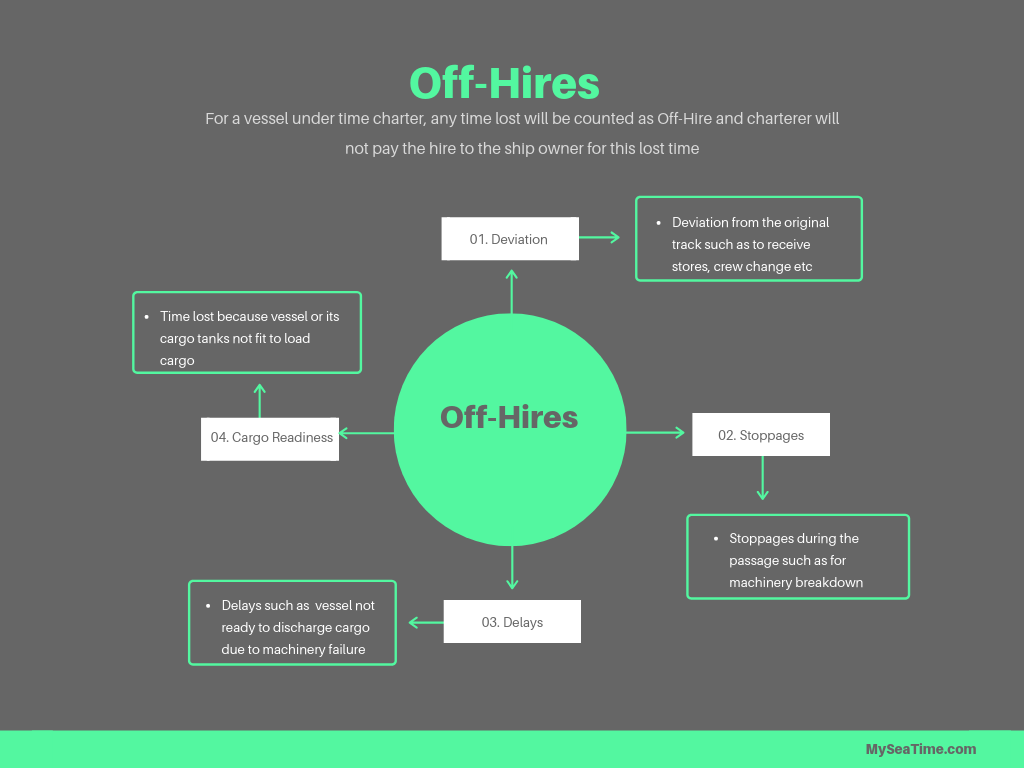
The charterer is in charge of running the ship and is responsible for paying all variable operating expenses like bunkers , port fees, handling fees, tolls on canals, etc.
The shipowner is responsible for paying the fixed operating expenses such as the cost of the ship’s capital, upkeep, supplies, insurance premiums, etc. Time charters are typically used for shorter-term leases and offer more flexibility to the charterer.
Bareboat Charters
The bareboat charter or demise charter is a different kind of charter. According to this agreement, the shipowner is leasing the ship to the charterer. Bareboat chartering typically involves placing a vessel at the charterer’s disposal for an extended length of time without any crew.
Thus, other than paying capital costs, the charterer will assume nearly all of the shipowner’s duties. This implies that the charterer will be financially responsible for the vessel’s maintenance, personnel expenses, insurance, and other charges, in addition to having commercial and technical responsibility for it.
Compared to other contract forms, bareboat chartering is less frequent. When a shipowner or ship operator wants to operate ships or add to his fleet for a while without making the financial obligations of true ownership, but at the same time has to have full control of the chartered vessel, including control over its navigation and management, it may be employed.
Additionally, bareboat chartering is occasionally used in conjunction with the financial plans for the vessel’s installment purchase. The bareboat charter then functions as a hire/purchase agreement, under which the shipowner/seller maintains legal ownership of the vessel and, consequently, security in it, up until the full purchase price is paid.
By employing the master and crew, a time charter differs from a bareboat charter. The master and crew are still the shipowner’s workers when a time charter is in place, but they will be under the time charterer’s control. As a result, the time charterer does not acquire ownership of the ship. With a bareboat charter, the charterer employs the master and crew and therefore assumes ownership of the ship.
What Are the Benefits of Ship Chartering?
There are many benefits that come with chartering a ship. First and foremost, chartering a ship is a great way to save money on transportation costs. Shipping cargo via a charter vessel can be up to 50% cheaper than shipping via a liner vessel.
Another benefit of chartering a ship is that it gives the charterer complete control over the vessel. The charterer gets to choose the route, speed, and port of call for the vessel. This is a great way to ensure that your cargo arrives on time and in good condition.
Finally, chartering a ship is a great way to avoid the hassles and costs associated with owning and operating a vessel. When you charter a ship, you don’t have to worry about things like maintenance, repairs, or crew. This can be a great way to save time and money.
What is a Charter Party?
A Charter Party is the agreement between the party in charge of a ship and a party seeking to use the ship.
A Voyage Charter party contains the names of the parties, the ship’s name and nationality, its deadweight and bale or grain capacity, the description of the goods to be loaded, the port of loading and discharge, lay days , the time for loading and discharge, the payment of freight, demurrage, despatch, and other pertinent information. There are more standard forms of voyage charter party than any other type of agreement.
The most well-known and often used general-purpose voyage charter party worldwide for all types of trades and for many different types of cargoes is the Uniform General Charter, also known by the code name GENCON and here is the latest published version by BIMCO . When these forms are used, multiple additional clauses usually referred to as rider clauses will be attached to address situations that the written provisions do not address.
There are several time forms for usage in the time chartering industry, although significantly less than the extensive selection offered for voyage chartering. The NYPE (New York Produce Exchange (NYPE 93) (amended 2001) and BALTIME (Baltic and International Marine Council (BALTIME 1939) are the two main types used for time charters. The NYPE Charter Party forms the basis for the vast majority of time charters.
There is just one widely used standard form for bareboat charter parties, and that is the BARECON form created by BIMCO. There are several clauses in this form that are frequently seen in time charter parties, as can be seen by closely examining it.
Particularly, if included in a time charter party, the provisions pertaining to delivery, canceling, trading limitations, surveys, inspections, hire, redelivery, general average, war, commission, and law and arbitration would be similarly effective.
Charter abbreviations
ATDNSHINC = Any Time Day or Night Sundays and Holidays Included
ATUTC = Actual Times Used to Count
FHEX = Fridays/Holidays Excluded
FHINC = Fridays/Holidays Included
FILO = Free In/Liner Out. Seafreight with which the shipper pays load costs and the = carrier pays for discharge costs.
FIO = Free In/Out. Freight booked FIO includes the sea freight, but no loading/discharging costs, i.e. the charterer pays for the cost of loading and discharging cargo.
FORCE MAJEURE = Clause limiting responsibilities of the charterers, shippers, and receivers due to events beyond their control.
SSHEX (or SATSHEX) = Saturdays, Sundays, Holidays Excluded
SSHINC = Saturdays, Sundays, Holidays Included (or SATSHINC)
WPD = Weather Permitting Day
WWD = Weather Working Day
Ship chartering is a great way to save money on transportation costs and avoid the hassles and costs of owning and operating a vessel. There are three main types of ship charter: Bareboat, Time, and Voyage.
Each type of charter has its own unique benefits and drawbacks. When chartering a ship, it’s important to understand the terms of the contract and to have the financial resources in place to make the initial payment and cover the costs of operating the vessel

About the author
I worked as an officer in the deck department on various types of vessels, including oil and chemical tankers, LPG carriers, and even reefer and TSHD in the early years. Currently employed as Marine Surveyor carrying cargo, draft, bunker, and warranty survey.
Leave a Reply Cancel reply
Your email address will not be published. Required fields are marked *
Save my name, email, and website in this browser for the next time I comment.
Latest posts

Sustainable and Luxurious: Discovering Split’s Yachting Paradise
Split, the Adriatic jewel, offers a yachting paradise where history meets pristine maritime beauty. Here, to rent a yacht means unlocking the gateway to exploring secluded bays, experiencing cultural heritage […]
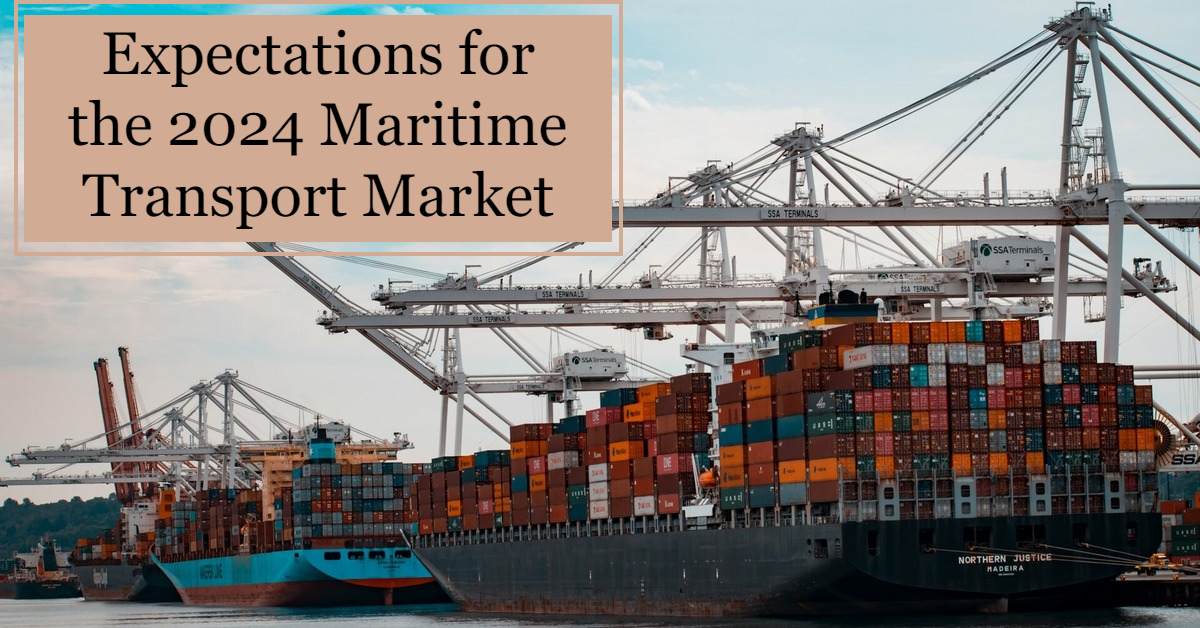
Expectations for the 2024 Maritime Transport Market
What does the 2024 maritime transport market look like? International events have disrupted supply chains and changing regulations keep industry leaders on their toes.
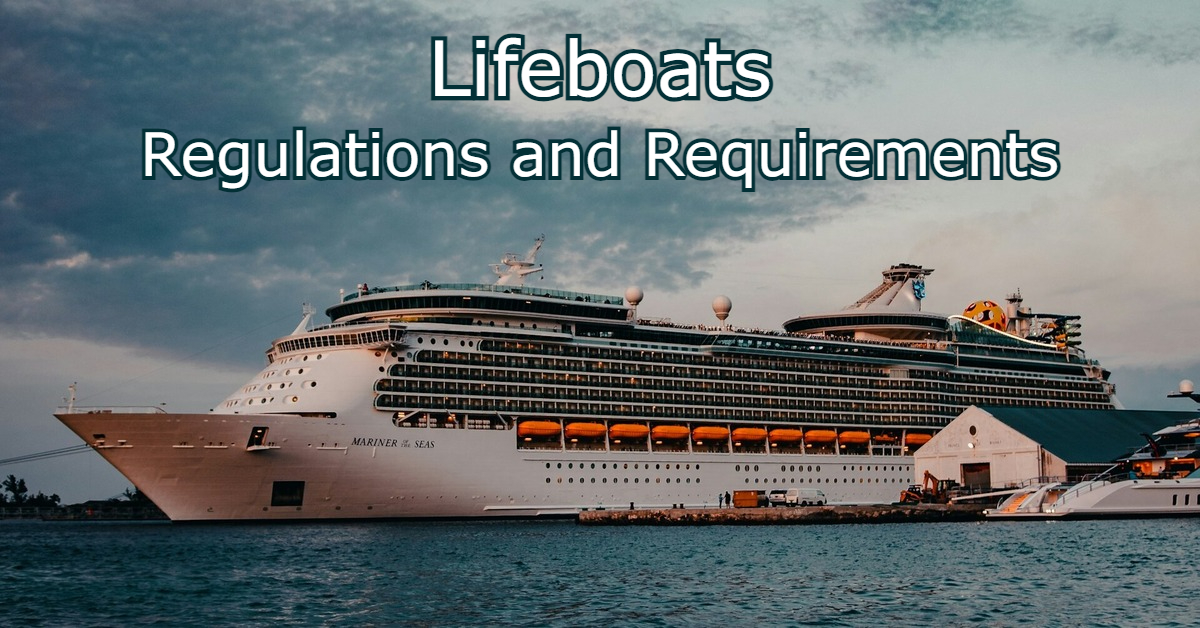
Lifeboats: Regulations and Requirements
In an emergency, portable vessels called lifeboats will get a ship’s occupants to relative safety. So how do lifeboats work?

Types of Charter Agreements: Time, Voyage, and Bareboat
Types of Charter Agreements: Time, Voyage, and Bareboat. In the intricate web of the maritime industry, charter agreements are the threads that connect shipowners and charterers, facilitating the movement of goods across the world’s oceans. These agreements come in various forms, each tailored to specific needs and circumstances. Among the most common types of charter agreements are time charters, voyage charters, and bareboat charters. In this article, we will delve into the details of these three fundamental charter types, exploring their characteristics, benefits, and when to use them.
1. Time Charter:
A time charter agreement is a widely employed arrangement in the maritime industry. In this type of charter, the shipowner leases their vessel to the charterer for a defined period, typically ranging from a few months to several years. During the charter period, the charterer gains operational control of the vessel, including selecting the ports of call and determining the cargoes to be transported.
Key Aspects of Time Charters:
– Operational Control: While the charterer assumes operational control, the shipowner retains ownership of the vessel. The shipowner provides and maintains the crew, and the charterer is responsible for covering the vessel’s operating expenses, including crew wages, fuel, and maintenance.
– Flexibility: Time charters offer flexibility to both parties. Charterers can adapt to changing market conditions and cargo requirements, while shipowners can secure steady revenue over the charter period.
– Revenue Structure: The charterer pays the shipowner a fixed daily rate, known as “hire,” for the vessel’s use. This rate is typically negotiated and agreed upon in advance. The charterer may also pay additional voyage-related expenses.
– Types of Cargo: Time charters are suitable for various types of cargo and are often used for transporting bulk commodities, such as coal, grains, and minerals, as well as containerized goods.
2. Voyage Charter
A voyage charter agreement, as the name suggests, is focused on a specific voyage or journey. In this arrangement, the shipowner provides the vessel to the charterer for a single voyage, from a designated port of loading to a port of discharge. Voyage charters are ideal for one-time cargo movements or irregular routes.
Key Aspects of Voyage Charters:
– Single Voyage: Unlike time charters, which cover an extended period, voyage charters are limited to a single voyage. Once the cargo is delivered, the charter agreement is completed.
– Freight Charges: The charterer pays freight charges based on the cargo’s weight or volume and the distance traveled. The shipowner remains responsible for all operating costs.
– Flexibility: Voyage charters offer flexibility to charterers, allowing them to choose specific vessels and routes for each voyage based on market conditions and cargo requirements.
– Cargo Variety: Voyage charters are commonly used for transporting a wide range of cargo, from raw materials to finished goods. They are particularly useful for cargo with specific loading and discharge locations.
3. Bareboat Charter (Demise Charter)
A bareboat charter, also known as a demise charter, represents a unique arrangement in which the charterer gains complete control and responsibility for the vessel. In this type of charter, the shipowner effectively transfers ownership to the charterer for the duration of the agreement.
Key Aspects of Bareboat Charters:
– Full Control: The charterer assumes full operational control of the vessel, including crewing, maintenance, and navigation. The shipowner is no longer involved in the vessel’s day-to-day operations.
– Ownership Transfer: During the charter period, the vessel is treated as if it were owned by the charterer. This includes registering the vessel under the charterer’s flag.
– Purchase Option: Bareboat charter agreements often include an option for the charterer to purchase the vessel at the end of the charter period. This option provides a clear path to ownership for the charterer.
– Specialized Use: Bareboat charters are common for specialized vessels, such as offshore platforms, drilling rigs, and research vessels.
Choosing the Right Charter Type:
Selecting the appropriate charter type depends on several factors, including the nature of the cargo, the duration of the transportation need, and the desired level of control. Time charters provide flexibility and steady revenue, voyage charters are ideal for one-time shipments, and bareboat charters offer full control and potential ownership.
In the dynamic world of maritime commerce, understanding these charter agreements is crucial for shipowners, charterers, and maritime professionals to make informed decisions that align with their specific goals and operational requirements. Each charter type serves a unique purpose, contributing to the intricate tapestry of global trade and logistics.
Related Articles
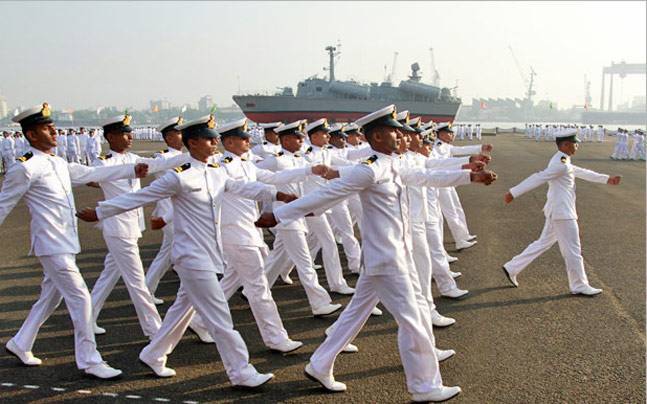
How To Join Merchant Navy After 10th, 12th Class And Graduation
Want to know as how you can join merchant navy? Well this fascinating career drags huge amount of people, especially young lads all across the globe towards it, So what is so special about this?, how is life out there, what you will do and what not, how much you will earn- read more about it here.In a […]

What is priming and foaming in boiler
Understanding Priming and Foaming in Boiler Systems. Boilers are essential components in many industrial and heating processes, providing steam or hot water for various applications. However, they can experience operational issues, two of which are priming and foaming. In this article, we will delve into what priming and foaming are in boiler systems and their […]

I Miss My Sailor- A Poem By Soumya Mitra
I Miss My Sailor It’s hard enough to say good-bye, And to know that time will crawl and NOT quickly fly. Falling asleep every night without you here, With nothing to comfort me and dry my tears. Gripping my pillow and longing for your touch, And crying to your picture, “I miss you so much.” […]
Leave a Reply Cancel reply
Your email address will not be published. Required fields are marked *
Save my name, email, and website in this browser for the next time I comment.
Voyage Charter: Laytime and Demurrage
- First Online: 02 September 2021
Cite this chapter

- Arun Kasi 2
731 Accesses
This chapter covers laytime and demurrage in voyage charterparties. The various laytime definitions such as weather working day, etc and the charterer’s obligations arising from the laytime clause are considered.
This is a preview of subscription content, log in via an institution to check access.
Access this chapter
- Available as PDF
- Read on any device
- Instant download
- Own it forever
- Available as EPUB and PDF
- Compact, lightweight edition
- Dispatched in 3 to 5 business days
- Free shipping worldwide - see info
- Durable hardcover edition
Tax calculation will be finalised at checkout
Purchases are for personal use only
Institutional subscriptions
Box 16 and cl. 6(a) and (b).
E.g. Stolt Tankers v Landmark [2002] 1 Lloyd’s Rep 786 (EW HC).
[1908] 1 KB 499 (EW CA).
[1963] AC 691 (UK HL).
Reardon Smith Line Ltd v Ministry of Agriculture, Fisheries and Food [1963] AC 691 (UK HL).
Dow Chemical (Nederland) BV v BP Tanker Co Ltd (The Vorras) [1983] 1 Lloyd’s Rep 579 (EW CA).
Margaronis Navigation Agency Ltd v Henry W Peabody & Co of London Ltd (The Vrontados) (HC) [1965] 1 QB 300, [1964] 2 All ER 296 (EW HC).
Another similar decision was reached in Total Transport Corporation v Arcadia Petroleum Ltd (The Eurus) [1996] 2 Lloyd’s Rep 408 (EW HC).
(1868) LR 2 QB 566 (EW HC), affirmed by the Court of Appeal in (1868) LR 3 QB 412 (EW CA).
[2015] SGCA 37, [2015] 5 SLR 178 (SG CA).
Houlder v General SN Co (1862) 3 F&F 170.
Christensen v Hindustan Steel [1971] 1 Lloyd’s Rep 395 (EW HC).
Compania de Naviera Nedelka SA v Tradax International SA of Panama City RP (The Tres Flores) [1974] QB 264, [1973] 2 Lloyd’s Rep 247, [1973] 3 All ER 967, [1973] 3 WLR 545 (EW CA).
Cobelfret NV v Cyclades Shipping Co Ltd (The Linardos) [1994] 1 Lloyd’s Rep 28 (EW HC).
Surrey Shipping Co Ltd v Compagnie Continentale (France) SA (The Shackleford) [1978] 1 WLR 1080, [1978] 2 Lloyd’s Rep 154 (EW CA).
Transgrain Shipping BV v Global Transporte Oceanico SA (The Mexico 1) (CA) [1990] 1 Lloyd’s Rep 507 (EW CA).
Ocean Pride Maritime Ltd Partnership v Qingdao Ocean Shipping Co (The Northgate) [2007] EWHC 2796 (Comm), [2008] 2 All ER (Comm) 330 (EW HC).
Sofial SA v Ove Skou Rederi (The Helle Skou) [1976] 2 Lloyd’s Rep 205 (EW HC).
Glencore Grain Ltd v Flacker Shipping Ltd (The Happy Day) [2002] EWCA Civ 1068, [2002] 2 All ER (Comm) 896, [2002] All ER (D) 219 (Jul), [2002] 2 Lloyd’s Rep 487 (EW CA).
E.g. Pteroti Cia Nav SA v National Coal Board [1958] 1 QB 469 (EW HC); Glencore Grain Ltd v Goldbeam Shipping Inc; Goldbeam Shipping Inc v Navios International Inc (The Mass Glory) [2002] EWHC 27 (Comm), [2002] 2 Lloyd’s Rep 244 (EW HC).
It is not compulsory that the destination point stipulated in the charterparty is a port or berth. It can also be other places like a sea mooring buoy or customary anchorage.
Cl. 6(c) (para 2).
Novologistics SARL v Five Ocean Corp (The Merida) [2009] EWHC 3046 (Comm), [2010] 1 Lloyd’s Rep 274 (EW HC).
Bulk Transport Group Shipping Co Ltd v Seacrystal Shipping Ltd (The Kyzikos ) [1989] AC 1264, [1988] 3 All ER 745, [1989] 1 Lloyd’s Rep 1 (UK HL).
[1950] 2 KB 194 (EW CA).
Oldendorff (E L) & Co GmbH v Tradax Export SA (The Johanna Oldendorff) [1974] AC 479, [1973] 3 All ER 148 (UK HL).
Federal Commerce and Navigation Co Ltd v Tradax Export SA (The Maratha Envoy) [1978] AC 1, [1977] 2 All ER 849 (UK HL).
See also Federal Commerce and Navigation Co Ltd v Tradax Export SA (The Maratha Envoy) [1978] AC 1, [1977] 2 All ER 849 (UK HL).
Navalmar UK Ltd v Kale Maden Hammaddeler Sanayi Ve Ticart AS (The Arundel Castle) [2017] EWHC 116 (Comm), [2017] 2 All ER (Comm) 1033, [2017] 1 Lloyd’s Rep 370 (EW HC).
There are a few LMAA awards that recognise this proposition. See Feoso (Singapore) Pte Ltd v Faith Maritime Co Ltd (The Daphne L) [2003] SGCA 34, [2003] SLR 556 (SG CA).
Bulk Transport Group Shipping Co Ltd v Seacrystal Shipping Ltd (The Kyzikos) [1989] AC 1264, [1988] 3 All ER 745, [1989] 1 Lloyd’s Rep 1 (UK HL).
[2011] EWHC 1361 (Comm), [2011] 2 Lloyd’s Rep 278 (EW HC).
North River Freighters Ltd v HE President of India (North River) [1956] 1 QB 333 (EW CA); Ionian Navigation Company Inc v Atlantic Shipping Company SA (The Loucas N) [1971] 1 Lloyd’s Rep 215 (EW CA); Aldebaran Compania Maritime SA, Panama v Aussenhandel AG Zurich (The Darrah) [1977] AC 157, [1976] 2 All ER 963 (UK HL); Freight Connect (S) Pte Ltd v Paragon Shipping Pte Ltd [2015] SGCA 37, [2015] 5 SLR 178 (SG CA).
Agios Stylianous Compania Naviera SA v Maritime Associates International Ltd Lagos (The Agios Stylianos) [1975] 1 Lloyd’s Rep 426 (EW HC).
Government of Ceylon v Societe Franco-Tunisienne D’armement-Tunis (The Massalia) (No. 2) [1960] 2 Lloyd’s Rep 352 (EW HC).
[2011] EWHC 1165 (Comm), [2011] 2 Lloyd’s Rep 177 (EW HC).
Aldebaran Compania Maritime SA, Panama v Aussenhandel AG Zurich (The Darrah) [1977] AC 157, [1976] 2 All ER 963 (UK HL).
The House of Lords overruled The Radnor [1955] 2 Lloyd’s Rep 668 (EW CA). The Radnor treated ‘time lost’ that did not admit laytime definition and exceptions when dealing with ‘time lost’ clauses.
Huyton SA v Inter Operators SA (The Stainless Emperor) [1994] 1 Lloyd’s Rep 298 (EW HC).
Moerland (Arnt J) K/S v Kuwait Petroleum Corpn (The Fjordaas) [1988] 2 All ER 714, [1988] 1 Lloyd’s Rep 336 (EW HC).
Seatrade Group NV v Hakan Agro DMCC (The Aconcagua Bay) [2018] EWHC 654 (Comm), [2018] 2 All ER (Comm) 843 (EW HC).
Inca Compania Naviera SA and Commercial and Maritime Enterprises Evanghelos P Nomikos SA v Mofinol Inc (The President Brand) [1967] 2 Lloyd’s Rep 338 (EW HC); Nereide SpA di Navigazione v Bulk Oil International (The Laura Prima) [1982] 1 Lloyd’s Rep 1 (UK HL).
Shipping Developments Corpn v v/o Sojuzneftexport (The Delian Spirit) [1972] 1 QB 103, [1971] 2 WLR 1434, [1971] 1 Lloyd’s Rep 506 (EW CA).
Inca Compania Naviera SA and Commercial and Maritime Enterprises Evanghelos P Nomikos SA v Mofinol Inc (The President Brand) [1967] 2 Lloyd’s Rep 338 (EW HC).
Oldendorff (E L) & Co GmbH v Tradax Export SA (The Johanna Oldendorff) [1974] AC 479, [1973] 3 All ER 148 (UK HL). See Chapter 14.4.2.1 for a discussion of this case.
Nereide SpA di Navigazione v Bulk Oil International (The Laura Prima) [1982] 1 Lloyd’s Rep 1 (UK HL).
The compensation payable by the charter, rightly, will be damages for detention, which may most of the time be same as the demurrage, unless the market rates have differed since the charterparty was entered into.
Sunbeam Shipping Co Ltd v President of India (The Atlantic Sunbeam) [1973] 1 Lloyd’s Rep 482 (EW HC): the charterer had a duty to secure ‘jetty challan’ for the ship to enter the port, where that was a requirement of the port authority.
Sociedad Financiera De Bienes Raices Sa v Agrimpex Hungarian Trading Company for Agricultural Products [Appeal in The Aello] [1961] AC 135, [1960] 3 WLR 145 (UK HL).
It follows that the ship could not issue notice of readiness.
Malaysian Contracts Act 1950.
Section 68 of the Malaysian Contracts Act 1950 identically provides.
See Chapter 12.6.1 .
Cl. 6(3) (para 2).
Tidebrook Maritime Corp v Vitol SA of Geneva (The Front Commander) [2006] 2 Lloyd’s Rep 251 (EW CA), speech of Rix JL: where the charterer requires early notice of readiness, the charter sanctions early commencement of laytime.
TA Shipping Ltd v Comet Shipping Ltd (The Agamemnon) [1998] 1 Lloyd’s Rep 675 (EW HC).
Galaxy Energy International Ltd v Novorossiysk Shipping Co (The Petr Schmidt) [1997] 1 Lloyd’s Rep 284 (EW HC), affirmed by the Court of Appeal in [1998] 2 Lloyd’s Rep 1 (EW CA).
See Tidebrook Maritime Corp v Vitol SA of Geneva (The Front Commander) [2006] EWCA Civ 944, [2006] 2 All ER (Comm) 813, [2006] 2 Lloyd’s Rep 251 (EW CA); Total Transport Corporation v Arcadia Petroleum Ltd (The Eurus) [1996] 2 Lloyd’s Rep 408 (EW HC).
[2010] EWCA Civ 713, [2010] 2 Lloyd’s Rep 257 (EW CA).
See Trafigura Beheer BV v Ravennavi SpA (The Port Russel) [2013] EWHC 490 (Comm), [2013] 2 Lloyd’s Rep 57 (EW HC).
Cl. 16 of Gencon 1994 form has detailed provision dealing with strikes.
Grant & Co v Coverdale, Todd & Co (1884) 9 App Cas 470, 53 LJQB 462 (UK HL).
Navrom v Callitsis Ship Management SA (The Radauti) [1988] 2 Lloyd’s Rep 416 (EW CA).
Cl. 6(c) (para 2): “… Time used in moving from the place of waiting to the loading/ discharging berth shall not count as laytime. …”
[1925] AC 799, [1925] All ER Rep 607 (UK HL).
Gem Shipping Co of Monrovia v Babanaft (Lebanon) SARL (The Fontevivo) [1975] 1 Lloyd’s Rep 339 (EW HC).
Blue Anchor Line Ltd v Alfred C Toepfer International GmbH (The Union Amsterdam) [1982] 2 Lloyd’s Rep 432 (EW HC).
Overseas Transportation Co v Mineralimportexport (The Sinoe) [1971] 1 Lloyd’s Rep 514 (EW HC), affirmed by the Court of Appeal in [1972] 1 Lloyd’s Rep 201 (EW CA).
[1920] AC 88 (UK HL).
[2002] 1 Lloyd’s Rep 786 (EW HC).
[1927] 1 KB 879 (EW CA).
[1905] 2 QB 267 (EW HC).
Universal Cargo Carriers Corp v Citati [1957] 2 QB 401 (EW HC).
Inverkip SS Co v Bunge [1917] 2 KB 193 (EW CA).
Wilson & Coventry Ltd v Otto Thoresen Linie [1910] 2 KB 405 (EW HC).
See Chapter 13.7 .
[2003] SGCA 34 (SG CA).
Dias Cia Naviera SA v Louis Dreyfus Corpn (The Dias) [1978] 1 All ER 724, [1978] 1 WLR 261 (UK HL).
Dias Cia Naviera SA v Louis Dreyfus Corpn (The Dias) [1978] 1 All ER 724; Nippon Yusen Kaisha v Marocaine de L’Industrie du Raffinage (The Tsukuba Maru) [1979] 1 Lloyd’s Rep 459.
Rich (Marc) & Co Ltd v Tourloti Cia Naviera SA (The Kalliopi A) [1988] 2 Lloyd’s Rep 101 (UK CA).
DGC Commodities Corp v Sea Metropolitan SA (The Andra) [2012] EWHC 1984 (Comm), [2012] 2 Lloyd’s Rep 587 (EW HC).
Which is identical to Article IV(2) of the Hague/Hague-Visby Rules.
K Line PTE Ltd v Priminds Shipping (HK) Co Ltd (The Eternal Bliss) [2020] EWHC 2373 (Comm), [2020] 9 WLUK 40 (EW HC).
Part II, cl. 15(c)
National Shipping Co of Saudi Arabia v BP Oil Supply Co (The Abqaiq) [2011] EWCA Civ 1127, [2012] 1 Lloyd’s Rep 18 (EW CA).
Waterfront Shipping Company Ltd V Trafigura AG (The Sabrewing) [2007] EWHC 2482 (Comm), [2008] 1 Lloyd’s Rep 286 (EW HC).
The Petroleum Oil and Gas Corporation of South Africa (Pty) Ltd v Fr8 Singapore Pte Ltd (The Eternity) [2009] 1 Lloyd’s Rep 107 (EW HC).
Emeraldian Ltd Partnership v Wellmix Shipping Ltd (The Vine) [2010] EWHC 1411 (Comm), [2011] 1 Lloyd’s Rep 301 (EW HC).
Nolisement (Owners) v Bunge and Born [1916-17] All ER Rep 734, [1917] 1 KB 160 (EW CA).
Zim Israel Navigation Co Ltd v Tradax Export SA (The Timna) [1971] 2 Lloyd’s Rep 91 (EW CA).
[1951] 1 KB 240, [1950] 1 All ER 768 (EW HC).
Author information
Authors and affiliations.
Arun Kasi & Co, Kuala Lumpur, Malaysia
You can also search for this author in PubMed Google Scholar
Corresponding author
Correspondence to Arun Kasi .
Rights and permissions
Reprints and permissions
Copyright information
© 2021 The Author(s), under exclusive license to Springer Nature Singapore Pte Ltd.
About this chapter
Kasi, A. (2021). Voyage Charter: Laytime and Demurrage. In: The Law of Carriage of Goods by Sea. Springer, Singapore. https://doi.org/10.1007/978-981-33-6793-7_14
Download citation
DOI : https://doi.org/10.1007/978-981-33-6793-7_14
Published : 02 September 2021
Publisher Name : Springer, Singapore
Print ISBN : 978-981-33-6792-0
Online ISBN : 978-981-33-6793-7
eBook Packages : Law and Criminology Law and Criminology (R0)
Share this chapter
Anyone you share the following link with will be able to read this content:
Sorry, a shareable link is not currently available for this article.
Provided by the Springer Nature SharedIt content-sharing initiative
- Publish with us
Policies and ethics
- Find a journal
- Track your research

Time charter and voyage charter: general guide
This is an introductory article on time charters and voyage charters.
There are three main types of charters in shipping:
Voyage charter
- Time charter.
- Bareboat charter (demise charter).
Charters are often compared to taxis because it is the most straightforward analogy to understand.
Let’s begin with an example:
Sergey orders an Uber to get to work. Sergei pays the price based on distance and traffic jams. He does not pay for gas and does not pay the driver’s wage. If the car waits longer than 3 minutes for Sergey, he pays for the wait time. If the driver breaks the traffic rules, Sergey will not be held responsible (but his boss can reprimand him for being late).
Let’s consider this example in the context of a voyage charter:
Poseidon chartered a vessel to carry 15,000 tons of wheat from Varna to Barcelona. The freight rate is $30 per tonne. The loading and unloading rate is 5,000 tons per working day. The demurrage rate is $2,000 per day.
Now let’s break down the example into components:
- Port of loading and discharge. A charterparty may indicate more than one port.
- The charge for the carriage is the freight. Freight is often calculated per tonne of cargo, although it can also be fixed.
- Time for loading and discharge – laytime. Usually stated as a loading/unloading rate per day.
- Wait time – demurrage.
The shipowner is responsible for the actions of the master and crew. The shipowner may not only be the registered owner of the vessel but also, for example, the time charterer or bareboat charterer.
In a voyage charter, the shipowner pays for bunker, master and crew wages, port charges, and other expenses related to the vessel. These costs are included in the freight rate. The shipowner also bears the cost of repairs to the vessel.
The primary responsibility of the charterer under a voyage charter is to provide the cargo and pay the freight. The shipowner takes care of everything else.
Time charter
A time charter is a car hire with a driver. Back to Sergey:
Sergey went on a business trip to London for a fortnight. He has no time to explore the city, so he has rented a car with a driver. Sergey pays by the day, regardless of the frequency and length of his trips. He also pays for petrol and paid parking. Sergey does not pay the driver’s wage and does not pay traffic fines.
In a time charter, the vessel is not chartered to carry specific cargo from point “A” to point “B”. It’s chartered for a specific period of time. The shipowner provides and pays for the master and crew, as well as the insurance costs for the vessel. As with a voyage charter, the shipowner is responsible for their actions.
A time charterer has more responsibility:
- Instead of the freight for the carriage, the charterer pays hire, a fixed fee for the use of the vessel. As a rule, hire is paid monthly or semi-monthly.
- The charterer pays for bunker, port charges, loading and unloading costs, agency services, etc.
There is no laytime and demurrage in a time charter, as the charterer uses the vessel at his own discretion.
Main terms of a voyage charter and a time charter
There are two types of terms in a charterparty: implied and express. Implied terms automatically apply to all charterparties as a matter of fact or law, even if they are not mentioned in the charter. The express terms are the terms of the charterparty.
Implied terms
There are five main implied terms:
- The shipowner shall provide a seaworthy vessel at the commencement of the voyage.
- The vessel shall proceed with reasonable despatch.
- There should be no unjustifiable deviation.
- Not to ship dangerous goods without notice.
- To nominate safe ports of loading and discharge.
This list is not exhaustive.
Time charter terms
Main terms of a time charter:
- Period of hire
- Trading limits – the geographical limitations in which the charterer is allowed to use the vessel.
- Provisions for the place and manner of delivery of the vessel to the charterer and redelivery to the shipowner
- Laydays/Cancelling – charterer’s ability to terminate the charter if the vessel is not delivered by the agreed date
- Hire rate and payment procedure
- Off-hire – cases where the charterer does not pay the hire because the vessel cannot be used (e.g. due to a breakdown)
- Quantity and payment of bunker fuel
- Cargo allowed for carriage
- Excluded cargo – cargo that the shipowner prohibits carrying on the vessel
- Speed and bunker consumption
- Provisions on the allocation of liability between the charterer and shipowner
Bareboat charter
This article does not cover bareboat (demise) charters, but getting back to Sergey, a bareboat charter is a hire car without a driver. You can read more about bareboat charters here .

English solicitor. I help to win courts and arbitrations in London. I specialise in Gafta and FOSFA arbitrations and maritime law (shipping). Also interested in English cryptocurrency disputes.
Related Posts

Ship Chartering

CIF and CFR (C&F): Obligations of the Parties and Transfer of Risks

International Commercial Arbitration Court at the Ukrainian Chamber of Commerce and Industry: a general guide
Write a comment cancel reply.
Save my name, email, and website in this browser for the next time I comment.
Type above and press Enter to search. Press Esc to cancel.
- Ship Charter Rates
- Ship Bunker
- Chartering News
- Chartering Lessons

Pros and Cons of Voyage Charter

Voyage Charter Pros
Voyage Charter provides a flexible means by which a ship can be provided for the carriage of a specific cargo between two specific ports. To this extent it will provide cover for a cargo interest’s short-term requirement to move cargo from X to Y.
Additionally, a shipowner can provide short-term employment for the ship by engaging them on voyage charters.
Many shipowners operating fleets of ships will employ ships in this way in order to balance their portfolio of work. A number of ships from the fleet will be operated on long-term time charters to provide a steady income stream for the shipowners.
The remaining proportion of the fleet will be employed on Voyage Charters in order to allow the shipowners to benefit from fluctuations in the market price for ships caused by shortages of ships.
In this way Voyage Charters provide a flexible solution to the intrinsically variable demands of shipping.
A voyage charter is a type of charter party in the shipping industry where a shipowner agrees to transport a specific quantity of cargo for a set price from one or more ports to one or more destinations. Like any contractual arrangement, voyage charters come with their own set of advantages and disadvantages:
Pros of Voyage Charter
- Defined Costs for Charterers : In a voyage charter, the cost of transporting goods is agreed upon in advance. This allows the charterer to know the exact cost of transportation, aiding in budgeting and financial planning.
- No Ship Operating Costs for Charterers : The shipowner bears all the operating costs of the ship, including fuel, crew, maintenance, and insurance. This is beneficial for the charterer as they are not exposed to these variable expenses.
- Efficiency in Cargo Transportation : Voyage charters are often the most efficient way to transport large quantities of cargo over long distances, making them ideal for bulk and commodity shipments.
- Flexibility in Cargo Handling : The charterer has some flexibility in specifying loading and unloading procedures, which can be tailored to the nature of the cargo.
- Market Opportunities for Shipowners : Voyage charters allow shipowners to capitalize on favorable market conditions, setting higher freight rates when demand is high.
- No Long-Term Commitment for Charterers : Voyage charters are typically for a single voyage, offering charterers flexibility without the need for a long-term commitment, as opposed to time charters which can last for several months or years.
- Market Insight for Shipowners : Engaging in various voyage charters can provide shipowners with valuable insights into different cargo markets and trade routes, which can inform future business decisions.
- Profit Maximization for Shipowners in High-Demand Periods : During periods of high demand, shipowners can capitalize by negotiating higher freight rates, maximizing their profit potential.
Cons of Voyage Charter
- Market Risk for Shipowners : The shipowner bears the risk of fluctuating market conditions. If the market rate for freight falls below the agreed-upon charter rate, the shipowner cannot benefit from the lower prices.
- Risk of Delays for Shipowners : The shipowner is exposed to the risk of delays due to loading and unloading operations, bad weather, or port congestion, which can increase operational costs.
- Limited Flexibility for Shipowners : Once a voyage charter is agreed upon, the shipowner has limited flexibility in employing the ship for other opportunities until the charter is completed.
- Potential for Cargo-Specific Issues for Charterers : If the cargo requires special handling or is subject to market fluctuations, the charterer might face challenges in timing and cargo readiness.
- Demurrage and Dispatch : If the loading or unloading takes longer than agreed (laytime), the charterer is typically liable to pay demurrage charges. Conversely, if operations are completed in less time, the charterer may receive dispatch money, but this is less common.
- Dependency on Ship’s Performance : The charterer’s operations are heavily dependent on the ship’s performance and punctuality, which they do not control.
- Operational Restrictions for Charterers : The charterer has limited control over the operational aspects of the ship, such as speed and route, which can impact the timing and efficiency of the cargo delivery.
- Risk of Freight Rate Fluctuations for Charterers : If the market freight rate falls after entering into a voyage charter, the charterer may end up paying more than the current market rate for the transportation.
- Potential Liability for Cargo Damage : In some cases, the charterer might be responsible for any damage to the cargo during loading or unloading operations, which could incur additional costs.
- Bunker Fuel Price Variability for Shipowners : The cost of bunker fuel, which is a significant operational expense, can fluctuate, impacting the profitability of the voyage for the shipowner, especially if not properly hedged or accounted for in the charter party agreement.
- Administrative and Coordination Efforts : Voyage charters often require significant administrative and coordination efforts, including contract negotiation, cargo scheduling, and liaison with port authorities.
- No Guarantee of Future Business : For shipowners, each voyage charter is a standalone agreement, which means there is no guarantee of continuous business once a voyage is completed.
While voyage charters offer a clear and straightforward way to transport goods, they also carry specific risks and limitations for both shipowners and charterers. The choice between a voyage charter and other types of charters, like time or bareboat charters, depends on the specific needs, risk tolerance, and operational preferences of the parties involved.
What are the benefits of Voyage Charter?
The benefits of a voyage charter, where a shipowner agrees to transport a specified amount of cargo for a charterer from one point to another for a predetermined rate, are numerous for both parties involved. Here are some key benefits:
Benefits for the Charterer
- Predictable Costs : The cost of transportation is fixed and agreed upon in advance, allowing the charterer to budget transportation expenses accurately.
- No Operating Costs : The charterer is not responsible for the operating costs of the ship, such as fuel, crew, and maintenance. This reduces financial risk and administrative burden.
- Suitable for Single or Occasional Shipments : Voyage charters are ideal for businesses that do not require regular shipments, offering a flexible and cost-effective solution for occasional transport needs.
- Flexibility in Cargo Management : Charterers can specify loading and unloading procedures to suit their cargo, ensuring optimal handling and safety.
- Reduced Liability : The charterer’s liability is generally limited to the cargo and operations at the port, reducing broader operational risks.
Benefits for the Shipowner
- Profit Opportunities : During periods of high demand, shipowners can negotiate favorable freight rates, maximizing their earnings.
- Market Exposure : Engaging in various voyage charters exposes shipowners to different markets and cargo types, diversifying their business experience and opportunities.
- Utilization of Ship : Voyage charters allow for the effective utilization of the ship, ensuring it generates income rather than remaining idle.
- Control Over Ship Operations : Shipowners retain control over the operation and navigation of the ship, allowing them to manage their fleet efficiently.
- Flexibility in Fleet Management : After the completion of a voyage charter, the shipowner is free to engage the ship in other charters or operations, maintaining flexibility in fleet management.
General Benefits
- Simplicity : Voyage charters are often straightforward and easier to negotiate and manage compared to more complex chartering arrangements like time charters.
- Clear Terms : The contract terms, including the freight rate, ports of loading and discharge, and laytime, are clearly defined, reducing the potential for disputes.
- Market Insights : For both parties, engaging in voyage charters can provide valuable insights into market trends, rates, and operational best practices.
Voyage Charters offer financial predictability and operational flexibility, making them an attractive option for both charterers and shipowners. The specific benefits can vary based on the nature of the cargo, market conditions, and the strategic objectives of the parties involved.
What are the advantages of Time Charter?
A time charter is a type of chartering agreement in the shipping industry where a charterer rents a ship for a specified period of time, with the shipowner still responsible for the ship’s operation and maintenance. This arrangement offers several advantages for both the charterer and the shipowner:
Advantages for the Charterer
- Operational Control : The charterer gains operational control over the ship for the charter period, including deciding the routes and cargoes, which offers greater flexibility in logistics and trade opportunities.
- Fixed Hire Rate : The charterer pays a fixed daily or monthly hire rate, making budgeting and financial planning more predictable.
- No Long-Term Capital Commitment : Charterers can secure the use of a ship without the capital investment required to purchase a ship, optimizing their capital allocation.
- Adaptability to Market Conditions : Time charters allow charterers to respond quickly to market changes by repositioning ships to more profitable routes or cargoes.
- Reduced Risk : Since the shipowner is responsible for the ship’s operation and maintenance, the charterer has reduced exposure to operational risks.
- Efficiency in Cargo Operations : Time charters are efficient for businesses with regular shipping needs, avoiding the need to negotiate separate voyage charters for each shipment.
Advantages for the Shipowner
- Stable Income : Time charters provide a steady, predictable income over the charter period, which can help in financial planning and securing loans.
- Reduced Marketing Effort : The shipowner doesn’t need to find new cargoes for each trip, as the charterer is responsible for cargo arrangements.
- Utilization of Fleet : Time charters help ensure that the ship is actively employed for a longer duration, reducing idle time.
- Operational Oversight : The shipowner retains control over the crew and the technical management of the ship, ensuring that standards are maintained.
- Flexibility in Fleet Management : After the expiration of the charter, the shipowner can reposition the ship for other opportunities, including other time charters or spot market voyages.
General Advantages
- Risk Distribution : Risks are distributed between the shipowner and the charterer, with each party bearing the risks associated with their responsibilities.
- Market Adaptability : Both parties can benefit from the flexibility to adapt to market conditions – the charterer through operational control and the shipowner through stable, long-term contracts.
- Long-Term Relationships : Time charters often foster long-term business relationships between shipowners and charterers, leading to future business opportunities.
Time Charters offer a balance of benefits for both parties, providing operational flexibility and market adaptability for charterers, and financial stability and reduced marketing efforts for shipowners. This makes them an attractive option for businesses with regular shipping needs and shipowners seeking stable, long-term engagements.
Why do Shipowners prefer Voyage Charter over Time Charter?
Shipowners may prefer voyage charters over time charters for several reasons, each linked to the specific characteristics of voyage charters and the strategic and financial priorities of the shipowner. Here are some of the key reasons:
- Higher Potential Profit in Favorable Markets : In a strong freight market, voyage charters can offer higher earning potential per voyage compared to the steady, but possibly lower, daily rates of time charters. This is particularly true when freight rates are rising, as shipowners can capitalize on higher market rates.
- Control Over Ship Operations : In a voyage charter, the shipowner retains control over the ship’s operation, including navigation and management. This allows them to maintain their operational standards and practices, which can be important for maintaining the ship’s condition and performance.
- Flexibility in Market Engagement : Voyage charters offer the flexibility to engage the ship in different markets and trade routes. After the completion of a voyage, the shipowner can reassess the market and choose the next charter based on the most favorable conditions, without being tied to a long-term commitment.
- No Dependency on Charterer’s Cargo Operations : In a time charter, the ship’s profitability is linked to the charterer’s ability to find and manage cargo effectively. In a voyage charter, the shipowner is not dependent on the charterer’s cargo operations, reducing the risk of inefficiencies or delays caused by the charterer.
- Risk of Market Downturn : While voyage charters expose shipowners to market fluctuations, some owners might prefer this over locking in a potentially lower long-term rate in a time charter, especially if they anticipate an upturn in the market.
- Reduced Credit Risk : Voyage charters typically involve shorter engagements with charterers and quicker payment terms. This reduces the credit risk associated with the charterer compared to longer time charter commitments.
- Easier Budgeting for Operational Costs : Since the shipowner is responsible for the ship’s operating costs in a voyage charter, they can more directly control and budget these expenses, as opposed to relying on the charterer’s management in a time charter.
- Lump Sum Payments : Some voyage charters involve lump-sum payments, which can be advantageous for cash flow management for the shipowner.
- Market Insights : Engaging in different voyage charters provides valuable insights into various cargo markets and trade routes, which can inform future business strategies.
However, it’s important to note that the preference for voyage charters over time charters can vary depending on the shipowner’s business model, risk tolerance, market conditions, and specific operational preferences. While some owners prefer the potential higher earnings and control of voyage charters, others might favor the stability and predictability of revenue from time charters.
Why do Charterers prefer Voyage Charter over Time Charter?
Charterers may prefer voyage charters over time charters for several reasons, mostly related to the specific benefits and characteristics of voyage charters that align with the charterers’ logistical needs, financial objectives, and risk management strategies. Here are some key reasons for this preference:
- Cost Predictability : In a voyage charter, the cost of transporting goods is fixed and agreed upon in advance. This allows charterers to know the exact cost of transportation, aiding in budgeting and financial planning.
- No Operational Responsibilities : The charterer is not responsible for the ship’s operational costs and management in a voyage charter. This includes crew wages, ship maintenance, and insurance, reducing the administrative burden and operational risks for the charterer.
- Ideal for Single or Specific Shipments : Voyage charters are particularly suitable for businesses that do not have regular shipping needs but require transportation for specific, occasional shipments.
- Reduced Capital Commitment : Since voyage charters are typically for single voyages, they require less commitment of financial resources compared to the potentially longer-term and more costly time charters.
- Avoidance of Market Fluctuations : Charterers are not exposed to fluctuations in charter rates once the voyage charter rate is agreed upon. This can be particularly advantageous in volatile markets.
- Flexibility in Cargo Handling : Charterers can have more say in specifying loading and unloading procedures in voyage charters, ensuring that these operations are tailored to the nature of the cargo.
- No Risk of Ship Underperformance : In voyage charters, the charterer is not affected by the risk of ship underperformance in terms of speed and fuel consumption, as these aspects are the shipowner’s responsibility.
- Simplicity and Convenience : Voyage charters are often more straightforward and easier to arrange and manage compared to the more complex and ongoing commitments of time charters.
- Less Liability for the Ship : The charterer’s liability is usually limited to the cargo and the operations at the port, and does not extend to the broader operations and maintenance of the ship.
- Suitable for Specific Trade Routes or Cargoes : For businesses that deal with specific trade routes or specialized cargoes, voyage charters offer the precision and customization needed for such operations.
The preference for voyage charters by charterers is largely driven by the cost predictability, reduced operational responsibilities, and suitability for specific or occasional shipping needs. However, the choice between voyage and time charters ultimately depends on the specific requirements, financial considerations, and risk appetite of the charterer.
What is the difference between Time Charter and Voyage Charter?
Time charter and voyage charter are two principal types of charter parties used in the shipping industry, and they differ significantly in terms of structure, responsibilities, and financial arrangements. Here’s a comparative overview:
Time Charter
- Duration-Based Agreement : In a time charter, the ship is chartered for a specific period. The charterer pays for the hire of the ship over this period, regardless of the number of voyages made.
- Charterer’s Control and Flexibility : The charterer has greater control over the ship’s operation, including its routes and cargoes, within the agreed limits of the charter.
- Shipowner’s Responsibilities : The shipowner is responsible for the ship’s operation and maintenance, including crewing, insurance, and repairs.
- Payment Structure : Payment is made on a per-day basis (hire rate), and the charterer is responsible for the fuel costs (bunker) and port charges.
- Risk Distribution : The charterer bears the commercial risks (such as cargo delays), while the shipowner bears the operational risks (such as mechanical failures).
Voyage Charter
- Trip-Specific Agreement : In a voyage charter, the agreement is for a specific voyage or series of voyages. The ship is chartered for the transportation of cargo from one or more load ports to one or more discharge ports.
- Shipowner’s Control : The shipowner controls the ship’s operation, including its navigation and management.
- Fixed Freight Rate : The charterer pays a lump sum or a rate per ton for the cargo transported. This rate is fixed regardless of the voyage duration.
- Shipowner’s Expenses : The shipowner pays for the ship’s operating costs, including fuel, crew, and maintenance.
- Risk Distribution : The shipowner bears most risks, including voyage duration and operational costs, while the charterer is primarily responsible for loading and unloading the cargo within the agreed laytime.
Key Differences
- Control and Flexibility : In a time charter, the charterer has more control and flexibility in employing the ship, while in a voyage charter, the shipowner has more control over the ship’s operation.
- Payment Structure : Time charters involve a day-rate payment model, while voyage charters involve payment based on cargo quantity or a lump sum for the journey.
- Duration of Agreement : Time charters are for a set period, whereas voyage charters are for one or more specific voyages.
- Risk and Responsibility : In time charters, operational responsibilities and some risks are with the shipowner, while commercial risks are with the charterer. In voyage charters, the shipowner assumes most of the operational and voyage risks.
Choosing between a time charter and a voyage charter depends on factors like the charterer’s need for flexibility, the duration of the requirement, cost considerations, and risk appetite. Each type offers different advantages and suits different shipping needs.
We kindly suggest to read more about Voyage Charter Vs Time Charter www.handybulk.com
HEADQUARTERS
HandyBulk LLC Oceania Business Plaza Tower 2000 Street Punta Colon 43th Floor Panama City, Panama
Contact Form
Shipbuilding contracts, hague-visby rules effect in time charter.

40 Facts About Elektrostal
Written by Lanette Mayes
Modified & Updated: 02 Mar 2024
Reviewed by Jessica Corbett

Elektrostal is a vibrant city located in the Moscow Oblast region of Russia. With a rich history, stunning architecture, and a thriving community, Elektrostal is a city that has much to offer. Whether you are a history buff, nature enthusiast, or simply curious about different cultures, Elektrostal is sure to captivate you.
This article will provide you with 40 fascinating facts about Elektrostal, giving you a better understanding of why this city is worth exploring. From its origins as an industrial hub to its modern-day charm, we will delve into the various aspects that make Elektrostal a unique and must-visit destination.
So, join us as we uncover the hidden treasures of Elektrostal and discover what makes this city a true gem in the heart of Russia.
Key Takeaways:
- Elektrostal, known as the “Motor City of Russia,” is a vibrant and growing city with a rich industrial history, offering diverse cultural experiences and a strong commitment to environmental sustainability.
- With its convenient location near Moscow, Elektrostal provides a picturesque landscape, vibrant nightlife, and a range of recreational activities, making it an ideal destination for residents and visitors alike.
Known as the “Motor City of Russia.”
Elektrostal, a city located in the Moscow Oblast region of Russia, earned the nickname “Motor City” due to its significant involvement in the automotive industry.
Home to the Elektrostal Metallurgical Plant.
Elektrostal is renowned for its metallurgical plant, which has been producing high-quality steel and alloys since its establishment in 1916.
Boasts a rich industrial heritage.
Elektrostal has a long history of industrial development, contributing to the growth and progress of the region.
Founded in 1916.
The city of Elektrostal was founded in 1916 as a result of the construction of the Elektrostal Metallurgical Plant.
Located approximately 50 kilometers east of Moscow.
Elektrostal is situated in close proximity to the Russian capital, making it easily accessible for both residents and visitors.
Known for its vibrant cultural scene.
Elektrostal is home to several cultural institutions, including museums, theaters, and art galleries that showcase the city’s rich artistic heritage.
A popular destination for nature lovers.
Surrounded by picturesque landscapes and forests, Elektrostal offers ample opportunities for outdoor activities such as hiking, camping, and birdwatching.
Hosts the annual Elektrostal City Day celebrations.
Every year, Elektrostal organizes festive events and activities to celebrate its founding, bringing together residents and visitors in a spirit of unity and joy.
Has a population of approximately 160,000 people.
Elektrostal is home to a diverse and vibrant community of around 160,000 residents, contributing to its dynamic atmosphere.
Boasts excellent education facilities.
The city is known for its well-established educational institutions, providing quality education to students of all ages.
A center for scientific research and innovation.
Elektrostal serves as an important hub for scientific research, particularly in the fields of metallurgy, materials science, and engineering.
Surrounded by picturesque lakes.
The city is blessed with numerous beautiful lakes, offering scenic views and recreational opportunities for locals and visitors alike.
Well-connected transportation system.
Elektrostal benefits from an efficient transportation network, including highways, railways, and public transportation options, ensuring convenient travel within and beyond the city.
Famous for its traditional Russian cuisine.
Food enthusiasts can indulge in authentic Russian dishes at numerous restaurants and cafes scattered throughout Elektrostal.
Home to notable architectural landmarks.
Elektrostal boasts impressive architecture, including the Church of the Transfiguration of the Lord and the Elektrostal Palace of Culture.
Offers a wide range of recreational facilities.
Residents and visitors can enjoy various recreational activities, such as sports complexes, swimming pools, and fitness centers, enhancing the overall quality of life.
Provides a high standard of healthcare.
Elektrostal is equipped with modern medical facilities, ensuring residents have access to quality healthcare services.
Home to the Elektrostal History Museum.
The Elektrostal History Museum showcases the city’s fascinating past through exhibitions and displays.
A hub for sports enthusiasts.
Elektrostal is passionate about sports, with numerous stadiums, arenas, and sports clubs offering opportunities for athletes and spectators.
Celebrates diverse cultural festivals.
Throughout the year, Elektrostal hosts a variety of cultural festivals, celebrating different ethnicities, traditions, and art forms.
Electric power played a significant role in its early development.
Elektrostal owes its name and initial growth to the establishment of electric power stations and the utilization of electricity in the industrial sector.
Boasts a thriving economy.
The city’s strong industrial base, coupled with its strategic location near Moscow, has contributed to Elektrostal’s prosperous economic status.
Houses the Elektrostal Drama Theater.
The Elektrostal Drama Theater is a cultural centerpiece, attracting theater enthusiasts from far and wide.
Popular destination for winter sports.
Elektrostal’s proximity to ski resorts and winter sport facilities makes it a favorite destination for skiing, snowboarding, and other winter activities.
Promotes environmental sustainability.
Elektrostal prioritizes environmental protection and sustainability, implementing initiatives to reduce pollution and preserve natural resources.
Home to renowned educational institutions.
Elektrostal is known for its prestigious schools and universities, offering a wide range of academic programs to students.
Committed to cultural preservation.
The city values its cultural heritage and takes active steps to preserve and promote traditional customs, crafts, and arts.
Hosts an annual International Film Festival.
The Elektrostal International Film Festival attracts filmmakers and cinema enthusiasts from around the world, showcasing a diverse range of films.
Encourages entrepreneurship and innovation.
Elektrostal supports aspiring entrepreneurs and fosters a culture of innovation, providing opportunities for startups and business development.
Offers a range of housing options.
Elektrostal provides diverse housing options, including apartments, houses, and residential complexes, catering to different lifestyles and budgets.
Home to notable sports teams.
Elektrostal is proud of its sports legacy, with several successful sports teams competing at regional and national levels.
Boasts a vibrant nightlife scene.
Residents and visitors can enjoy a lively nightlife in Elektrostal, with numerous bars, clubs, and entertainment venues.
Promotes cultural exchange and international relations.
Elektrostal actively engages in international partnerships, cultural exchanges, and diplomatic collaborations to foster global connections.
Surrounded by beautiful nature reserves.
Nearby nature reserves, such as the Barybino Forest and Luchinskoye Lake, offer opportunities for nature enthusiasts to explore and appreciate the region’s biodiversity.
Commemorates historical events.
The city pays tribute to significant historical events through memorials, monuments, and exhibitions, ensuring the preservation of collective memory.
Promotes sports and youth development.
Elektrostal invests in sports infrastructure and programs to encourage youth participation, health, and physical fitness.
Hosts annual cultural and artistic festivals.
Throughout the year, Elektrostal celebrates its cultural diversity through festivals dedicated to music, dance, art, and theater.
Provides a picturesque landscape for photography enthusiasts.
The city’s scenic beauty, architectural landmarks, and natural surroundings make it a paradise for photographers.
Connects to Moscow via a direct train line.
The convenient train connection between Elektrostal and Moscow makes commuting between the two cities effortless.
A city with a bright future.
Elektrostal continues to grow and develop, aiming to become a model city in terms of infrastructure, sustainability, and quality of life for its residents.
In conclusion, Elektrostal is a fascinating city with a rich history and a vibrant present. From its origins as a center of steel production to its modern-day status as a hub for education and industry, Elektrostal has plenty to offer both residents and visitors. With its beautiful parks, cultural attractions, and proximity to Moscow, there is no shortage of things to see and do in this dynamic city. Whether you’re interested in exploring its historical landmarks, enjoying outdoor activities, or immersing yourself in the local culture, Elektrostal has something for everyone. So, next time you find yourself in the Moscow region, don’t miss the opportunity to discover the hidden gems of Elektrostal.
Q: What is the population of Elektrostal?
A: As of the latest data, the population of Elektrostal is approximately XXXX.
Q: How far is Elektrostal from Moscow?
A: Elektrostal is located approximately XX kilometers away from Moscow.
Q: Are there any famous landmarks in Elektrostal?
A: Yes, Elektrostal is home to several notable landmarks, including XXXX and XXXX.
Q: What industries are prominent in Elektrostal?
A: Elektrostal is known for its steel production industry and is also a center for engineering and manufacturing.
Q: Are there any universities or educational institutions in Elektrostal?
A: Yes, Elektrostal is home to XXXX University and several other educational institutions.
Q: What are some popular outdoor activities in Elektrostal?
A: Elektrostal offers several outdoor activities, such as hiking, cycling, and picnicking in its beautiful parks.
Q: Is Elektrostal well-connected in terms of transportation?
A: Yes, Elektrostal has good transportation links, including trains and buses, making it easily accessible from nearby cities.
Q: Are there any annual events or festivals in Elektrostal?
A: Yes, Elektrostal hosts various events and festivals throughout the year, including XXXX and XXXX.
Was this page helpful?
Our commitment to delivering trustworthy and engaging content is at the heart of what we do. Each fact on our site is contributed by real users like you, bringing a wealth of diverse insights and information. To ensure the highest standards of accuracy and reliability, our dedicated editors meticulously review each submission. This process guarantees that the facts we share are not only fascinating but also credible. Trust in our commitment to quality and authenticity as you explore and learn with us.
Share this Fact:

Current time by city
For example, New York
Current time by country
For example, Japan
Time difference
For example, London
For example, Dubai
Coordinates
For example, Hong Kong
For example, Delhi
For example, Sydney
Geographic coordinates of Elektrostal, Moscow Oblast, Russia
City coordinates
Coordinates of Elektrostal in decimal degrees
Coordinates of elektrostal in degrees and decimal minutes, utm coordinates of elektrostal, geographic coordinate systems.
WGS 84 coordinate reference system is the latest revision of the World Geodetic System, which is used in mapping and navigation, including GPS satellite navigation system (the Global Positioning System).
Geographic coordinates (latitude and longitude) define a position on the Earth’s surface. Coordinates are angular units. The canonical form of latitude and longitude representation uses degrees (°), minutes (′), and seconds (″). GPS systems widely use coordinates in degrees and decimal minutes, or in decimal degrees.
Latitude varies from −90° to 90°. The latitude of the Equator is 0°; the latitude of the South Pole is −90°; the latitude of the North Pole is 90°. Positive latitude values correspond to the geographic locations north of the Equator (abbrev. N). Negative latitude values correspond to the geographic locations south of the Equator (abbrev. S).
Longitude is counted from the prime meridian ( IERS Reference Meridian for WGS 84) and varies from −180° to 180°. Positive longitude values correspond to the geographic locations east of the prime meridian (abbrev. E). Negative longitude values correspond to the geographic locations west of the prime meridian (abbrev. W).
UTM or Universal Transverse Mercator coordinate system divides the Earth’s surface into 60 longitudinal zones. The coordinates of a location within each zone are defined as a planar coordinate pair related to the intersection of the equator and the zone’s central meridian, and measured in meters.
Elevation above sea level is a measure of a geographic location’s height. We are using the global digital elevation model GTOPO30 .
Elektrostal , Moscow Oblast, Russia

IMAGES
VIDEO
COMMENTS
A voyage charter is a type of charter in which a vessel is leased out for a particular voyage. The charter agreement lists the ports of call, destination, and restrictions on cargo, if any. Most voyage charters are undertaken by charterers who have cargo that needs to be shipped.
A voyage charter focuses on the transportation of a specific cargo on a single voyage between designated ports.. The most common way to pay for this type of charter is on a per-ton basis. As the name implies, this sees the charterer paying a set price for every ton of cargo they transport and is preferred when the amount of cargo they're transporting is significantly less than the vessel's ...
What is a voyage charter? Voyage charter definition : The voyage charter is a contract (voyage charter party) between the shipowner and the charterer wherein the shipowner agrees to transport a given quantity of a shipment, using a pre-nominated vessel for a single voyage from a nominated port (say X) to a nominated port (say Y), within a given time period.
Voyage charters. Voyage charters in ship chartering involve hiring a vessel for a single journey. Unlike time charters, which focus on an extended period, voyage charters are specific to one trip. The charterer pays the ship owner for transporting goods from one port to another without long-term possession or control over the carrier. Bareboat ...
Chartering is an activity within the shipping industry whereby a shipowner hires out the use of their vessel to a charterer. The contract between the parties is called a charterparty (from the French "charte partie", or "parted document"). The three main types of charter are: demise charter, voyage charter, and time charter .
Voyage charters are the most commonly used charter party agreement. Under a voyage charter, a ship owner and a charterer enter into a contract whereby the vessel will carry cargo between two points. The voyage can be a single trip or multiple trips, provided that the charterer has absolutely no operational control over the vessel while it is ...
Voyage Charter. This is the most common type of ship charter. A voyage charter normally involves renting the vessel as well as its crew for a particular voyage between two or more ports. The rent will be based on the quantity or weight of the cargo that is carried on the voyage or it could be a fixed amount that is agreed upon between the parties.
charter party, contract by which the owner of a ship lets it to others for use in transporting a cargo.The shipowner continues to control the navigation and management of the vessel, but its carrying capacity is engaged by the charterer.. There are four principal methods of chartering a tramp ship—voyage charter, time charter, bareboat charter, and " lump-sum" contract.
Other articles where voyage charter is discussed: charter party: The voyage charter is the most common. Under this method a ship is chartered for a one-way voyage between specific ports with a specified cargo at a negotiated rate of freight. On time charter, the charterer hires the ship for a stated period of time, for…
Voyage charters are ideal for one-off shipments or when cargo volumes are uncertain. Bareboat Charter: In a bareboat charter, the charterer takes complete control of the vessel, including crewing and maintenance. This type of chartering is similar to vessel ownership, with the charterer assuming full responsibility for the vessel during the ...
A voyage charter is when the charterer leases a vessel for a specific voyage, such as Dubai to Singapore, while a time charter is a type of lease that allows the charterer use of the vessel for a specific period of time. As you might imagine, there are many differences between these two types of charters, and both vessel chartering options have ...
In demise charters, it is the charterer who pays such periodic costs. Voyage costs cover the fuel, any right of passage dues, such as canal dues, towage and piloting costs, as well as port agency costs. With time and demise charters, the voyage costs are paid by the charterer. Only in voyage charters are these costs paid by the owner.
Types of vessel charters. There are three main types of vessel charters: Voyage charter: A voyage charter is a contract for the carriage of a specific cargo from one port to another. The charterer pays the shipowner a freight rate per ton of cargo or a lump-sum amount for the entire voyage.
Voyage Charters. Voyage chartering is a contract in which the shipowner agrees to carry a specific cargo on their vessel for a single trip from one or more loading ports to one or more discharge ports. The payment for this service is called freight, and the contract is called a voyage charter party.
2. Voyage Charter. A voyage charter agreement, as the name suggests, is focused on a specific voyage or journey. In this arrangement, the shipowner provides the vessel to the charterer for a single voyage, from a designated port of loading to a port of discharge. Voyage charters are ideal for one-time cargo movements or irregular routes.
This chapter covers laytime and demurrage in voyage charterparties. The various laytime definitions such as weather working day, etc and the charterer's obligations arising from the laytime clause are considered. The question of when laytime starts and the associated matters such as notice of readiness (NOR), 'arrived ship', readiness of ...
Voyage Charter: A voyage charter is an agreement where the shipowner agrees to transport a specific cargo or goods from one port to another. The key features of a voyage charter include: a) Duration: The charter period is typically for a single voyage or a series of voyages between specified ports.
Time charter and voyage charter: general guide. This is an introductory article on time charters and voyage charters. There are three main types of charters in shipping: Time charter. Bareboat charter (demise charter). Charters are often compared to taxis because it is the most straightforward analogy to understand.
Voyage Charter Pros. Voyage Charter provides a flexible means by which a ship can be provided for the carriage of a specific cargo between two specific ports. To this extent it will provide cover for a cargo interest's short-term requirement to move cargo from X to Y. Additionally, a shipowner can provide short-term employment for the ship by ...
Elektrostal. Elektrostal ( Russian: Электроста́ль) is a city in Moscow Oblast, Russia. It is 58 kilometers (36 mi) east of Moscow. As of 2010, 155,196 people lived there.
40 Facts About Elektrostal. Elektrostal is a vibrant city located in the Moscow Oblast region of Russia. With a rich history, stunning architecture, and a thriving community, Elektrostal is a city that has much to offer. Whether you are a history buff, nature enthusiast, or simply curious about different cultures, Elektrostal is sure to ...
Moscow Oblast (Russian: Моско́вская о́бласть, romanized: Moskovskaya oblast', IPA: [mɐˈskofskəjə ˈobləsʲtʲ]), also known as Podmoskovye (Подмоско́вье, IPA: [pədmɐˈskovʲjə]), is a federal subject of Russia (an oblast).With a population of 8,524,665 (2021 Census) living in an area of 44,300 square kilometers (17,100 sq mi), it is one of the most ...
Geographic coordinates of Elektrostal, Moscow Oblast, Russia in WGS 84 coordinate system which is a standard in cartography, geodesy, and navigation, including Global Positioning System (GPS). Latitude of Elektrostal, longitude of Elektrostal, elevation above sea level of Elektrostal.